Tag #rank
385 papers:
 SANER-2019-YuBLKYX #empirical #fault #learning #predict
SANER-2019-YuBLKYX #empirical #fault #learning #predict- An Empirical Study of Learning to Rank Techniques for Effort-Aware Defect Prediction (XY, KEB, JL0, JWK, XY, ZX), pp. 298–309.
 DLT-2019-KariRV #automaton #finite #word
DLT-2019-KariRV #automaton #finite #word- Words of Minimum Rank in Deterministic Finite Automata (JK, AR, AV), pp. 74–87.
 CIKM-2019-KuziLSJZ #adaptation #analysis #information retrieval #learning
CIKM-2019-KuziLSJZ #adaptation #analysis #information retrieval #learning- Analysis of Adaptive Training for Learning to Rank in Information Retrieval (SK, SL, SKKS, PPJ, CZ), pp. 2325–2328.
 CIKM-2019-ZouLAWZ #learning #multi #named
CIKM-2019-ZouLAWZ #learning #multi #named- MarlRank: Multi-agent Reinforced Learning to Rank (SZ, ZL, MA, JW0, PZ), pp. 2073–2076.
 ICML-2019-JunWWN
ICML-2019-JunWWN - Bilinear Bandits with Low-rank Structure (KSJ, RW, SW, RDN), pp. 3163–3172.
 ICML-2019-LiLS #learning #online
ICML-2019-LiLS #learning #online- Online Learning to Rank with Features (SL, TL, CS), pp. 3856–3865.
 ICML-2019-LuiseSPC #predict
ICML-2019-LuiseSPC #predict- Leveraging Low-Rank Relations Between Surrogate Tasks in Structured Prediction (GL, DS, MP, CC), pp. 4193–4202.
 ICML-2019-NayerNV #matrix #metric
ICML-2019-NayerNV #matrix #metric- Phaseless PCA: Low-Rank Matrix Recovery from Column-wise Phaseless Measurements (SN, PN, NV), pp. 4762–4770.
 ICML-2019-SharanTBV #performance
ICML-2019-SharanTBV #performance- Compressed Factorization: Fast and Accurate Low-Rank Factorization of Compressively-Sensed Data (VS, KST, PB, GV), pp. 5690–5700.
 ICML-2019-TrippeHAB #approximate #named #using
ICML-2019-TrippeHAB #approximate #named #using- LR-GLM: High-Dimensional Bayesian Inference Using Low-Rank Data Approximations (BLT, JHH, RA, TB), pp. 6315–6324.
 POPL-2019-DunfieldK #bidirectional #morphism #polymorphism
POPL-2019-DunfieldK #bidirectional #morphism #polymorphism- Sound and complete bidirectional typechecking for higher-rank polymorphism with existentials and indexed types (JD, NRK), p. 28.
 CIKM-2018-AiMLC #learning #theory and practice
CIKM-2018-AiMLC #learning #theory and practice- Unbiased Learning to Rank: Theory and Practice (QA, JM, YL, WBC), pp. 2305–2306.
 CIKM-2018-FerroLM0 #continuation #education #learning
CIKM-2018-FerroLM0 #continuation #education #learning- Continuation Methods and Curriculum Learning for Learning to Rank (NF0, CL, MM, RP0), pp. 1523–1526.
 CIKM-2018-KutluEHL #correlation #metric #order #statistics
CIKM-2018-KutluEHL #correlation #metric #order #statistics- When Rank Order Isn't Enough: New Statistical-Significance-Aware Correlation Measures (MK, TE, MH, ML), pp. 397–406.
 CIKM-2018-KwonKC #matrix #self
CIKM-2018-KwonKC #matrix #self- Improving Low-Rank Matrix Completion with Self-Expressiveness (MK, HGK, HJC), pp. 1651–1654.
 CIKM-2018-LoyolaGS #debugging #learning #locality
CIKM-2018-LoyolaGS #debugging #learning #locality- Bug Localization by Learning to Rank and Represent Bug Inducing Changes (PL, KG, FS), pp. 657–665.
 CIKM-2018-MouraoM #modelling
CIKM-2018-MouraoM #modelling- Low-Complexity Supervised Rank Fusion Models (AM, JM), pp. 1691–1694.
 CIKM-2018-OosterhuisR #learning #online
CIKM-2018-OosterhuisR #learning #online- Differentiable Unbiased Online Learning to Rank (HO, MdR), pp. 1293–1302.
 CIKM-2018-SongZWTZJC #graph #learning #named
CIKM-2018-SongZWTZJC #graph #learning #named- TGNet: Learning to Rank Nodes in Temporal Graphs (QS, BZ, YW, LAT, HZ, GJ, HC), pp. 97–106.
 ICML-2018-ChengDH #learning
ICML-2018-ChengDH #learning- Extreme Learning to Rank via Low Rank Assumption (MC, ID, CJH), pp. 950–959.
 ICML-2018-DouikH #clustering #graph #matrix #optimisation #probability
ICML-2018-DouikH #clustering #graph #matrix #optimisation #probability- Low-Rank Riemannian Optimization on Positive Semidefinite Stochastic Matrices with Applications to Graph Clustering (AD, BH), pp. 1298–1307.
 ICML-2018-JawanpuriaM #framework #learning #matrix
ICML-2018-JawanpuriaM #framework #learning #matrix- A Unified Framework for Structured Low-rank Matrix Learning (PJ, BM), pp. 2259–2268.
 ICML-2018-ZhangWYG #analysis #matrix
ICML-2018-ZhangWYG #analysis #matrix- A Primal-Dual Analysis of Global Optimality in Nonconvex Low-Rank Matrix Recovery (XZ, LW, YY, QG), pp. 5857–5866.
 ICPR-2018-DengLLZL #composition #detection
ICPR-2018-DengLLZL #composition #detection- Low-Rank and Sparse Decomposition on Contrast Map for Small Infrared Target Detection (XD, WL0, LL, WZ, XL), pp. 2682–2687.
 ICPR-2018-GuoHSY #classification #multi
ICPR-2018-GuoHSY #classification #multi- Low Rank Multi-Label Classification with Missing Labels (BG, CH, JS, DY), pp. 417–422.
 ICPR-2018-LeiZH0HL #classification #learning #multi
ICPR-2018-LeiZH0HL #classification #learning #multi- Multi-classification of Parkinson's Disease via Sparse Low-Rank Learning (HL, YZ, ZH, FZ0, LH, BL), pp. 3268–3272.
 ICPR-2018-RenZLLWY #learning #representation #robust #taxonomy
ICPR-2018-RenZLLWY #learning #representation #robust #taxonomy- Robust Projective Low-Rank and Sparse Representation by Robust Dictionary Learning (JR, ZZ0, SL0, GL, MW0, SY), pp. 1851–1856.
 ICPR-2018-SunCWX #coordination #learning #metric #online #parallel
ICPR-2018-SunCWX #coordination #learning #metric #online #parallel- Online Low-Rank Metric Learning via Parallel Coordinate Descent Method (GS, YC, QW0, XX), pp. 207–212.
 ICPR-2018-WangZLYQW #adaptation #representation #robust
ICPR-2018-WangZLYQW #adaptation #representation #robust- Robust Adaptive Low-Rank and Sparse Embedding for Feature Representation (LW, ZZ0, GL, QY, JQ, MW0), pp. 800–805.
 ICPR-2018-XieCL #image #re-engineering
ICPR-2018-XieCL #image #re-engineering- Nonlocal Low-Rank and Total Variation Constrained PET Image Reconstruction (NX, YC, HL), pp. 3874–3879.
 ICPR-2018-XueQLJ
ICPR-2018-XueQLJ - Low-Rank Tensor Completion by Truncated Nuclear Norm Regularization (SX, WQ, FL, XJ), pp. 2600–2605.
 KDD-2018-HuDZ0X #analysis #e-commerce #formal method #learning
KDD-2018-HuDZ0X #analysis #e-commerce #formal method #learning- Reinforcement Learning to Rank in E-Commerce Search Engine: Formalization, Analysis, and Application (YH, QD, AZ, YY0, YX), pp. 368–377.
 KDD-2018-SongXCCT #multi #retrieval
KDD-2018-SongXCCT #multi #retrieval- Deep r -th Root of Rank Supervised Joint Binary Embedding for Multivariate Time Series Retrieval (DS, NX, WC, HC, DT), pp. 2229–2238.
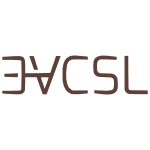 CSL-2018-DawarW #logic #symmetry
CSL-2018-DawarW #logic #symmetry- Symmetric Circuits for Rank Logic (AD, GW), p. 16.
 DLT-2017-KuncM
DLT-2017-KuncM - The Generalized Rank of Trace Languages (MK, JM), pp. 247–259.
 CIKM-2017-Abu-El-HaijaPA #learning #symmetry
CIKM-2017-Abu-El-HaijaPA #learning #symmetry- Learning Edge Representations via Low-Rank Asymmetric Projections (SAEH, BP, RAR), pp. 1787–1796.
 CIKM-2017-EnsanBZK #empirical #learning
CIKM-2017-EnsanBZK #empirical #learning- An Empirical Study of Embedding Features in Learning to Rank (FE, EB, AZ, AK), pp. 2059–2062.
 CIKM-2017-OosterhuisR17a #information retrieval #learning #online #quality
CIKM-2017-OosterhuisR17a #information retrieval #learning #online #quality- Balancing Speed and Quality in Online Learning to Rank for Information Retrieval (HO, MdR), pp. 277–286.
 CIKM-2017-ShiLC #continuation #estimation
CIKM-2017-ShiLC #continuation #estimation- Tensor Rank Estimation and Completion via CP-based Nuclear Norm (QS, HL, YmC), pp. 949–958.
 CIKM-2017-XuLLX #learning
CIKM-2017-XuLLX #learning- Learning to Rank with Query-level Semi-supervised Autoencoders (BX0, HL, YL0, KX), pp. 2395–2398.
 CIKM-2017-YuCY #algebra #finite #matrix #recommendation
CIKM-2017-YuCY #algebra #finite #matrix #recommendation- Low-Rank Matrix Completion over Finite Abelian Group Algebras for Context-Aware Recommendation (CAY, TSC, YHY), pp. 2415–2418.
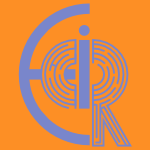 ECIR-2017-SoldainiG #approach #health #learning #semantics
ECIR-2017-SoldainiG #approach #health #learning #semantics- Learning to Rank for Consumer Health Search: A Semantic Approach (LS, NG), pp. 640–646.
 ICML-2017-0001JZ #analysis #geometry #problem
ICML-2017-0001JZ #analysis #geometry #problem- No Spurious Local Minima in Nonconvex Low Rank Problems: A Unified Geometric Analysis (RG0, CJ, YZ), pp. 1233–1242.
 ICML-2017-AndersonG #algorithm #approximate #online #performance
ICML-2017-AndersonG #algorithm #approximate #online #performance- An Efficient, Sparsity-Preserving, Online Algorithm for Low-Rank Approximation (DGA, MG0), pp. 156–165.
 ICML-2017-ChierichettiG0L #algorithm #approximate
ICML-2017-ChierichettiG0L #algorithm #approximate- Algorithms for lₚ Low-Rank Approximation (FC, SG, RK0, SL, RP, DPW), pp. 806–814.
 ICML-2017-JiangKALS #process
ICML-2017-JiangKALS #process- Contextual Decision Processes with low Bellman rank are PAC-Learnable (NJ, AK, AA, JL0, RES), pp. 1704–1713.
 ICML-2017-KhannaEDGN #approximate #on the #optimisation
ICML-2017-KhannaEDGN #approximate #on the #optimisation- On Approximation Guarantees for Greedy Low Rank Optimization (RK, ERE, AGD, JG, SNN), pp. 1837–1846.
 ICML-2017-MohajerSE #learning
ICML-2017-MohajerSE #learning- Active Learning for Top-K Rank Aggregation from Noisy Comparisons (SM, CS, AE), pp. 2488–2497.
 ICML-2017-OngieWNB #algebra #matrix #modelling
ICML-2017-OngieWNB #algebra #matrix #modelling- Algebraic Variety Models for High-Rank Matrix Completion (GO, RW, RDN, LB), pp. 2691–2700.
 ICML-2017-WangZG #framework #matrix
ICML-2017-WangZG #framework #matrix- A Unified Variance Reduction-Based Framework for Nonconvex Low-Rank Matrix Recovery (LW, XZ, QG), pp. 3712–3721.
 ICML-2017-ZhaoLW0TY #matrix #network
ICML-2017-ZhaoLW0TY #matrix #network- Theoretical Properties for Neural Networks with Weight Matrices of Low Displacement Rank (LZ, SL, YW, ZL0, JT0, BY0), pp. 4082–4090.
 ICML-2017-ZoghiTGKSW #learning #modelling #online #probability
ICML-2017-ZoghiTGKSW #learning #modelling #online #probability- Online Learning to Rank in Stochastic Click Models (MZ, TT, MG, BK, CS, ZW), pp. 4199–4208.
 KDD-2017-0001YXWY #approximate #effectiveness #named #personalisation
KDD-2017-0001YXWY #approximate #effectiveness #named #personalisation- FORA: Simple and Effective Approximate Single-Source Personalized PageRank (SW0, RY, XX, ZW, YY), pp. 505–514.
 CSL-2017-ChenFH #bound #first-order #logic #quantifier #slicing
CSL-2017-ChenFH #bound #first-order #logic #quantifier #slicing- Slicewise Definability in First-Order Logic with Bounded Quantifier Rank (YC, JF, XH), p. 16.
 ICPC-2016-TianWLG #debugging #learning #recommendation
ICPC-2016-TianWLG #debugging #learning #recommendation- Learning to rank for bug report assignee recommendation (YT0, DW, DL0, CLG), pp. 1–10.
 CIKM-2016-CheungL #learning #robust #scalability
CIKM-2016-CheungL #learning #robust #scalability- Scalable Spectral k-Support Norm Regularization for Robust Low Rank Subspace Learning (YmC, JL), pp. 1151–1160.
 CIKM-2016-DeveaudMN #learning
CIKM-2016-DeveaudMN #learning- Learning to Rank System Configurations (RD, JM, JYN), pp. 2001–2004.
 CIKM-2016-LiSCS #adaptation #effectiveness #on the #query
CIKM-2016-LiSCS #adaptation #effectiveness #on the #query- On the Effectiveness of Query Weighting for Adapting Rank Learners to New Unlabelled Collections (PL, MS, MJC, FS), pp. 1413–1422.
 CIKM-2016-LiSNLF #hashtag #learning #recommendation #topic #twitter
CIKM-2016-LiSNLF #hashtag #learning #recommendation #topic #twitter- Hashtag Recommendation Based on Topic Enhanced Embedding, Tweet Entity Data and Learning to Rank (QL, SS, AN, XL, RF), pp. 2085–2088.
 CIKM-2016-LiuLLC #composition #named #personalisation #random #scalability
CIKM-2016-LiuLLC #composition #named #personalisation #random #scalability- PowerWalk: Scalable Personalized PageRank via Random Walks with Vertex-Centric Decomposition (QL, ZL, JCSL, JC), pp. 195–204.
 CIKM-2016-PengKYC #matrix #named #scalability
CIKM-2016-PengKYC #matrix #named #scalability- RAP: Scalable RPCA for Low-rank Matrix Recovery (CP, ZK, MY, QC), pp. 2113–2118.
 CIKM-2016-SilvaGAG #learning
CIKM-2016-SilvaGAG #learning- Compression-Based Selective Sampling for Learning to Rank (RMS, GdCMG, MSA, MAG), pp. 247–256.
 CIKM-2016-SousaCRMG #feature model #learning
CIKM-2016-SousaCRMG #feature model #learning- Incorporating Risk-Sensitiveness into Feature Selection for Learning to Rank (DXdS, SDC, TCR, WSM, MAG), pp. 257–266.
 CIKM-2016-TymoshenkoBM #learning #web
CIKM-2016-TymoshenkoBM #learning #web- Learning to Rank Non-Factoid Answers: Comment Selection in Web Forums (KT, DB, AM), pp. 2049–2052.
 CIKM-2016-ZhaoK #learning #online #reliability
CIKM-2016-ZhaoK #learning #online #reliability- Constructing Reliable Gradient Exploration for Online Learning to Rank (TZ, IK), pp. 1643–1652.
 ECIR-2016-BotevaGSR #dataset #information retrieval #learning
ECIR-2016-BotevaGSR #dataset #information retrieval #learning- A Full-Text Learning to Rank Dataset for Medical Information Retrieval (VB, DGG, AS, SR), pp. 716–722.
 ICML-2016-GuiHG #estimation #matrix #performance #towards
ICML-2016-GuiHG #estimation #matrix #performance #towards- Towards Faster Rates and Oracle Property for Low-Rank Matrix Estimation (HG, JH0, QG), pp. 2300–2309.
 ICML-2016-KasaiM #approach
ICML-2016-KasaiM #approach- Low-rank tensor completion: a Riemannian manifold preconditioning approach (HK, BM), pp. 1012–1021.
 ICML-2016-KatariyaKSW #learning #multi
ICML-2016-KatariyaKSW #learning #multi- DCM Bandits: Learning to Rank with Multiple Clicks (SK, BK, CS, ZW), pp. 1215–1224.
 ICML-2016-KhetanO #data-driven #performance
ICML-2016-KhetanO #data-driven #performance- Data-driven Rank Breaking for Efficient Rank Aggregation (AK, SO), pp. 89–98.
 ICML-2016-LiCLYSC #approximate #matrix
ICML-2016-LiCLYSC #approximate #matrix- Low-Rank Matrix Approximation with Stability (DL, CC0, QL, JY, LS, SMC), pp. 295–303.
 ICML-2016-LiLR #approximate
ICML-2016-LiLR #approximate- Recovery guarantee of weighted low-rank approximation via alternating minimization (YL, YL, AR), pp. 2358–2367.
 ICML-2016-ShenLX #clustering #online #taxonomy
ICML-2016-ShenLX #clustering #online #taxonomy- Online Low-Rank Subspace Clustering by Basis Dictionary Pursuit (JS0, PL0, HX), pp. 622–631.
 ICML-2016-TuBSSR #equation #linear #matrix
ICML-2016-TuBSSR #equation #linear #matrix- Low-rank Solutions of Linear Matrix Equations via Procrustes Flow (ST, RB, MS, MS, BR), pp. 964–973.
 ICML-2016-UbaruS #matrix #performance #scalability
ICML-2016-UbaruS #matrix #performance #scalability- Fast methods for estimating the Numerical rank of large matrices (SU, YS), pp. 468–477.
 ICML-2016-Wipf #analysis #estimation
ICML-2016-Wipf #analysis #estimation- Analysis of Variational Bayesian Factorizations for Sparse and Low-Rank Estimation (DPW), pp. 926–935.
 ICPR-2016-Brandtberg #analysis #classification #fourier #fuzzy #multi #order #using
ICPR-2016-Brandtberg #analysis #classification #fourier #fuzzy #multi #order #using- Virtual hexagonal and multi-scale operator for fuzzy rank order texture classification using one-dimensional generalised Fourier analysis (TB), pp. 2018–2024.
 ICPR-2016-DaiDCLY #multi #representation #segmentation #using
ICPR-2016-DaiDCLY #multi #representation #segmentation #using- Object segmentation using low-rank representation with multiple block-diagonal priors (LD, JD, JC, JL0, JY0), pp. 1959–1964.
 ICPR-2016-WangLX #adaptation #image #representation
ICPR-2016-WangLX #adaptation #image #representation- Adaptive boosting for image denoising: Beyond low-rank representation and sparse coding (BW, TL0, ZX), pp. 1400–1405.
 ICPR-2016-YaoXG #image #multi
ICPR-2016-YaoXG #image #multi- A rank minimization-based late fusion method for multi-label image annotation (YY0, XX0, PG0), pp. 847–852.
 ICPR-2016-YiHLCC #adaptation #re-engineering #representation #taxonomy
ICPR-2016-YiHLCC #adaptation #re-engineering #representation #taxonomy- Simultaneous Dual-Views Reconstruction with Adaptive Dictionary and Low-Rank Representation (SY, ZH, YL, YMC, WC), pp. 1607–1611.
 ICPR-2016-YouXLZCTZ #image #matrix
ICPR-2016-YouXLZCTZ #image #matrix- Single image super-resolution with non-local balanced low-rank matrix restoration (XY, WX, JL, PZ0, YmC, YT, NZ), pp. 1255–1260.
 KDD-2016-LynchAA #image #learning #multimodal #scalability #semantics #visual notation
KDD-2016-LynchAA #image #learning #multimodal #scalability #semantics #visual notation- Images Don't Lie: Transferring Deep Visual Semantic Features to Large-Scale Multimodal Learning to Rank (CL, KA, JA), pp. 541–548.
 KDD-2016-ZhangLG #approximate #graph #personalisation
KDD-2016-ZhangLG #approximate #graph #personalisation- Approximate Personalized PageRank on Dynamic Graphs (HZ, PL, AG), pp. 1315–1324.
- ICSE-2016-JingQWX #estimation
- Missing data imputation based on low-rank recovery and semi-supervised regression for software effort estimation (XYJ, FQ, FW0, BX), pp. 607–618.
 VLDB-2015-BrancotteYBBDH #analysis
VLDB-2015-BrancotteYBBDH #analysis- Rank aggregation with ties: Experiments and Analysis (BB, BY, GB, SCB, AD, SH), pp. 1202–1213.
 VLDB-2015-MitliagkasBDC #approximate #exclamation #graph #performance
VLDB-2015-MitliagkasBDC #approximate #exclamation #graph #performance- FrogWild! — Fast PageRank Approximations on Graph Engines (IM, MB, AGD, CC), pp. 874–885.
 VLDB-2015-MouratidisZP #query
VLDB-2015-MouratidisZP #query- Maximum Rank Query (KM, JZ, HP), pp. 1554–1565.
 CIKM-2015-CarmelHLMR #email
CIKM-2015-CarmelHLMR #email- Rank by Time or by Relevance?: Revisiting Email Search (DC, GH, LLE, YM, AR), pp. 283–292.
 CIKM-2015-KangLHWNXP #learning #similarity
CIKM-2015-KangLHWNXP #learning #similarity- Cross-Modal Similarity Learning: A Low Rank Bilinear Formulation (CK, SL, YH, JW, WN, SX, CP), pp. 1251–1260.
 CIKM-2015-KangPC #approximate #clustering #robust
CIKM-2015-KangPC #approximate #clustering #robust- Robust Subspace Clustering via Tighter Rank Approximation (ZK, CP, QC), pp. 393–401.
 CIKM-2015-MetrikovPA #crowdsourcing #integration #learning
CIKM-2015-MetrikovPA #crowdsourcing #integration #learning- Aggregation of Crowdsourced Ordinal Assessments and Integration with Learning to Rank: A Latent Trait Model (PM, VP, JAA), pp. 1391–1400.
 CIKM-2015-TranNKGA #adaptation #learning #summary #timeline
CIKM-2015-TranNKGA #adaptation #learning #summary #timeline- Balancing Novelty and Salience: Adaptive Learning to Rank Entities for Timeline Summarization of High-impact Events (TT0, CN, NK, UG, AA), pp. 1201–1210.
 CIKM-2015-WangYHWT #clustering #multi #representation
CIKM-2015-WangYHWT #clustering #multi #representation- Multi-view Clustering via Structured Low-rank Representation (DW, QY, RH, LW0, TT), pp. 1911–1914.
 CIKM-2015-YeZMJZ #approach #consistency #learning #multi #privacy
CIKM-2015-YeZMJZ #approach #consistency #learning #multi #privacy- Rank Consistency based Multi-View Learning: A Privacy-Preserving Approach (HJY, DCZ, YM, YJ0, ZHZ), pp. 991–1000.
 ECIR-2015-NicosiaBM #learning
ECIR-2015-NicosiaBM #learning- Learning to Rank Aggregated Answers for Crossword Puzzles (MN, GB, AM), pp. 556–561.
 ICML-2015-AvronH #community #detection #personalisation #using
ICML-2015-AvronH #community #detection #personalisation #using- Community Detection Using Time-Dependent Personalized PageRank (HA, LH), pp. 1795–1803.
 ICML-2015-ChenS
ICML-2015-ChenS - Spectral MLE: Top-K Rank Aggregation from Pairwise Comparisons (YC, CS), pp. 371–380.
 ICML-2015-HazanLM #classification
ICML-2015-HazanLM #classification- Classification with Low Rank and Missing Data (EH, RL, YM), pp. 257–266.
 ICML-2015-KvetonSWA #learning
ICML-2015-KvetonSWA #learning- Cascading Bandits: Learning to Rank in the Cascade Model (BK, CS, ZW, AA), pp. 767–776.
 ICML-2015-PrasadPR #analysis #axiom
ICML-2015-PrasadPR #analysis #axiom- Distributional Rank Aggregation, and an Axiomatic Analysis (AP, HHP, PDR), pp. 2104–2112.
 ICML-2015-TewariC #bound #documentation #fault #learning #matter #question
ICML-2015-TewariC #bound #documentation #fault #learning #matter #question- Generalization error bounds for learning to rank: Does the length of document lists matter? (AT, SC), pp. 315–323.
 ICML-2015-UbaruMS #approximate #fault #matrix #using
ICML-2015-UbaruMS #approximate #fault #matrix #using- Low Rank Approximation using Error Correcting Coding Matrices (SU, AM, YS), pp. 702–710.
 ICML-2015-XinW #adaptation #probability
ICML-2015-XinW #adaptation #probability- Pushing the Limits of Affine Rank Minimization by Adapting Probabilistic PCA (BX, DPW), pp. 419–427.
 ICML-2015-YuCL #learning #multi #online
ICML-2015-YuCL #learning #multi #online- Accelerated Online Low Rank Tensor Learning for Multivariate Spatiotemporal Streams (RY, DC, YL), pp. 238–247.
 ICML-2015-ZhangWJ #algorithm #bound #distributed #estimation #matrix #performance
ICML-2015-ZhangWJ #algorithm #bound #distributed #estimation #matrix #performance- Distributed Estimation of Generalized Matrix Rank: Efficient Algorithms and Lower Bounds (YZ, MJW, MIJ), pp. 457–465.
 ICML-2015-ZukW #matrix #metric
ICML-2015-ZukW #matrix #metric- Low-Rank Matrix Recovery from Row-and-Column Affine Measurements (OZ, AW), pp. 2012–2020.
 KDD-2015-HouWGD #clustering #programming
KDD-2015-HouWGD #clustering #programming- Non-exhaustive, Overlapping Clustering via Low-Rank Semidefinite Programming (YH, JJW, DFG, ISD), pp. 427–436.
 KDD-2015-OhsakaMK #evolution #network #performance
KDD-2015-OhsakaMK #evolution #network #performance- Efficient PageRank Tracking in Evolving Networks (NO, TM, KiK), pp. 875–884.
 KDD-2015-PengKLC #approximate #clustering #using
KDD-2015-PengKLC #approximate #clustering #using- Subspace Clustering Using Log-determinant Rank Approximation (CP, ZK, HL, QC), pp. 925–934.
 KDD-2015-XieBDG #performance #personalisation
KDD-2015-XieBDG #performance #personalisation- Edge-Weighted Personalized PageRank: Breaking A Decade-Old Performance Barrier (WX, DB, AJD, JG), pp. 1325–1334.
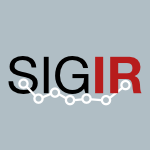 SIGIR-2015-LuccheseNOPTV #algorithm #documentation #named #performance
SIGIR-2015-LuccheseNOPTV #algorithm #documentation #named #performance- QuickScorer: A Fast Algorithm to Rank Documents with Additive Ensembles of Regression Trees (CL, FMN, SO, RP, NT, RV), pp. 73–82.
 SIGIR-2015-MehrotraY #learning #query #using
SIGIR-2015-MehrotraY #learning #query #using- Representative & Informative Query Selection for Learning to Rank using Submodular Functions (RM, EY), pp. 545–554.
 SIGIR-2015-SeverynM #learning #network
SIGIR-2015-SeverynM #learning #network- Learning to Rank Short Text Pairs with Convolutional Deep Neural Networks (AS, AM), pp. 373–382.
 ASE-2015-ZouYLM0 #learning #retrieval
ASE-2015-ZouYLM0 #learning #retrieval- Learning to Rank for Question-Oriented Software Text Retrieval (T) (YZ, TY, YL, JM, LZ), pp. 1–11.
 STOC-2015-CohenEMMP #approximate #clustering #reduction
STOC-2015-CohenEMMP #approximate #clustering #reduction- Dimensionality Reduction for k-Means Clustering and Low Rank Approximation (MBC, SE, CM, CM, MP), pp. 163–172.
 CSL-2015-GradelP #exclamation #logic
CSL-2015-GradelP #exclamation #logic- Rank Logic is Dead, Long Live Rank Logic! (EG, WP), pp. 390–404.
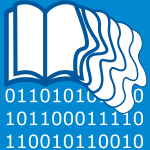 JCDL-2014-OtegiAC #personalisation #recommendation
JCDL-2014-OtegiAC #personalisation #recommendation- Personalised PageRank for making recommendations in digital cultural heritage collections (AO, EA, PDC), pp. 49–52.
 VLDB-2014-MaeharaAIK #graph #personalisation
VLDB-2014-MaeharaAIK #graph #personalisation- Computing Personalized PageRank Quickly by Exploiting Graph Structures (TM, TA, YI, KiK), pp. 1023–1034.
 VLDB-2014-NtarmosPT #database #query
VLDB-2014-NtarmosPT #database #query- Rank Join Queries in NoSQL Databases (NN, IP, PT), pp. 493–504.
 ICSME-2014-BinkleyL #information retrieval #learning
ICSME-2014-BinkleyL #information retrieval #learning- Learning to Rank Improves IR in SE (DB, DJL), pp. 441–445.
 ICALP-v1-2014-KolMSY #approximate #bound
ICALP-v1-2014-KolMSY #approximate #bound- Approximate Nonnegative Rank Is Equivalent to the Smooth Rectangle Bound (GK, SM, AS, AY), pp. 701–712.
 ICALP-v1-2014-TulsianiWZ #game studies #graph #parallel
ICALP-v1-2014-TulsianiWZ #game studies #graph #parallel- Optimal Strong Parallel Repetition for Projection Games on Low Threshold Rank Graphs (MT, JW, YZ), pp. 1003–1014.
 CIKM-2014-ArguelloC #behaviour
CIKM-2014-ArguelloC #behaviour- The Effects of Vertical Rank and Border on Aggregated Search Coherence and Search Behavior (JA, RGC), pp. 539–548.
 CIKM-2014-DeveaudAMO #learning #on the
CIKM-2014-DeveaudAMO #learning #on the- On the Importance of Venue-Dependent Features for Learning to Rank Contextual Suggestions (RD, MDA, CM, IO), pp. 1827–1830.
 CIKM-2014-LiangRWMR #microblog
CIKM-2014-LiangRWMR #microblog- Time-Aware Rank Aggregation for Microblog Search (SL, ZR, WW, EM, MdR), pp. 989–998.
 CIKM-2014-ZhukovskiyGS
CIKM-2014-ZhukovskiyGS - Supervised Nested PageRank (MZ, GG, PS), pp. 1059–1068.
 ECIR-2014-NainiA #feature model #learning
ECIR-2014-NainiA #feature model #learning- Exploiting Result Diversification Methods for Feature Selection in Learning to Rank (KDN, ISA), pp. 455–461.
 ICML-c1-2014-RajkumarA #algorithm #convergence #statistics
ICML-c1-2014-RajkumarA #algorithm #convergence #statistics- A Statistical Convergence Perspective of Algorithms for Rank Aggregation from Pairwise Data (AR, SA), pp. 118–126.
 ICML-c2-2014-Busa-FeketeHS #elicitation #modelling #statistics #using
ICML-c2-2014-Busa-FeketeHS #elicitation #modelling #statistics #using- Preference-Based Rank Elicitation using Statistical Models: The Case of Mallows (RBF, EH, BS), pp. 1071–1079.
 ICML-c2-2014-HaeffeleYV #algorithm #image #matrix
ICML-c2-2014-HaeffeleYV #algorithm #image #matrix- Structured Low-Rank Matrix Factorization: Optimality, Algorithm, and Applications to Image Processing (BDH, EY, RV), pp. 2007–2015.
 ICML-c2-2014-PapailiopoulosMDC #optimisation
ICML-c2-2014-PapailiopoulosMDC #optimisation- Finding Dense Subgraphs via Low-Rank Bilinear Optimization (DSP, IM, AGD, CC), pp. 1890–1898.
 ICML-c2-2014-RaiWGCDC #composition #multi #scalability
ICML-c2-2014-RaiWGCDC #composition #multi #scalability- Scalable Bayesian Low-Rank Decomposition of Incomplete Multiway Tensors (PR, YW, SG, GC, DBD, LC), pp. 1800–1808.
 ICPR-2014-DengHXC #analysis #composition #matrix
ICPR-2014-DengHXC #analysis #composition #matrix- Sparse and Low Rank Matrix Decomposition Based Local Morphological Analysis and Its Application to Diagnosis of Cirrhosis Livers (JD, XHH, GX, YWC), pp. 3363–3368.
 ICPR-2014-QuachDB #approximate #recognition #representation #robust
ICPR-2014-QuachDB #approximate #recognition #representation #robust- Sparse Representation and Low-Rank Approximation for Robust Face Recognition (KGQ, CND, TDB), pp. 1330–1335.
 ICPR-2014-TaoIWS #approximate #data transformation #representation
ICPR-2014-TaoIWS #approximate #data transformation #representation- Ensemble Manifold Structured Low Rank Approximation for Data Representation (LT, HHSI, YW, XS), pp. 744–749.
 ICPR-2014-WuTS #3d #learning
ICPR-2014-WuTS #3d #learning- Learning to Rank the Severity of Unrepaired Cleft Lip Nasal Deformity on 3D Mesh Data (JW, RT, LGS), pp. 460–464.
 ICPR-2014-YangLLZ #consistency #geometry #image
ICPR-2014-YangLLZ #consistency #geometry #image- Low Rank Global Geometric Consistency for Partial-Duplicate Image Search (LY, YL, ZL, HZ), pp. 3939–3944.
 KDD-2014-ChenC #incremental #named #set
KDD-2014-ChenC #incremental #named #set- LWI-SVD: low-rank, windowed, incremental singular value decompositions on time-evolving data sets (XC, KSC), pp. 987–996.
 KDD-2014-LiWW #matrix #testing
KDD-2014-LiWW #matrix #testing- Improved testing of low rank matrices (YL, ZW, DPW), pp. 691–700.
 KDD-2014-LofgrenBGC #estimation #graph #named #personalisation #scalability
KDD-2014-LofgrenBGC #estimation #graph #named #personalisation #scalability- FAST-PPR: scaling personalized pagerank estimation for large graphs (PL, SB, AG, SC), pp. 1436–1445.
 KDD-2014-ParkG #algorithm #health #named #re-engineering
KDD-2014-ParkG #algorithm #health #named #re-engineering- LUDIA: an aggregate-constrained low-rank reconstruction algorithm to leverage publicly released health data (YP, JG), pp. 55–64.
 KDD-2014-ZhouC #adaptation #documentation #learning
KDD-2014-ZhouC #adaptation #documentation #learning- Unifying learning to rank and domain adaptation: enabling cross-task document scoring (MZ, KCCC), pp. 781–790.
 RecSys-2014-SuiB #feedback #online #recommendation
RecSys-2014-SuiB #feedback #online #recommendation- Clinical online recommendation with subgroup rank feedback (YS, JWB), pp. 289–292.
 SIGIR-2014-NiuLGCG #data analysis #learning #robust #what
SIGIR-2014-NiuLGCG #data analysis #learning #robust #what- What makes data robust: a data analysis in learning to rank (SN, YL, JG, XC, XG), pp. 1191–1194.
 SIGIR-2014-YuWZTSZ #learning
SIGIR-2014-YuWZTSZ #learning- Hashing with List-Wise learning to rank (ZY, FW, YZ, ST, JS, YZ), pp. 999–1002.
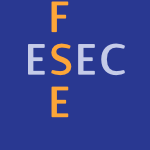 FSE-2014-YeBL #debugging #learning #using
FSE-2014-YeBL #debugging #learning #using- Learning to rank relevant files for bug reports using domain knowledge (XY, RCB, CL), pp. 689–699.
 PPoPP-2014-MalekiMM #convergence #programming
PPoPP-2014-MalekiMM #convergence #programming- Parallelizing dynamic programming through rank convergence (SM, MM, TM), pp. 219–232.
 ESOP-2014-SlepakSM #morphism #polymorphism
ESOP-2014-SlepakSM #morphism #polymorphism- An Array-Oriented Language with Static Rank Polymorphism (JS, OS, PM), pp. 27–46.
 STOC-2014-Lovett #bound #communication
STOC-2014-Lovett #bound #communication- Communication is bounded by root of rank (SL), pp. 842–846.
 STOC-2014-Mehta #constant #game studies
STOC-2014-Mehta #constant #game studies- Constant rank bimatrix games are PPAD-hard (RM), pp. 545–554.
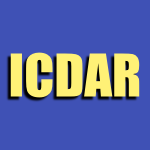 ICDAR-2013-ZhangLSM #invariant
ICDAR-2013-ZhangLSM #invariant- Rectification of Optical Characters as Transform Invariant Low-Rank Textures (XZ, ZL, FS, YM), pp. 393–397.
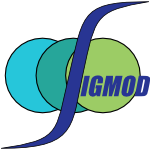 SIGMOD-2013-FujiwaraNSMO #ad hoc #performance #personalisation
SIGMOD-2013-FujiwaraNSMO #ad hoc #performance #personalisation- Efficient ad-hoc search for personalized PageRank (YF, MN, HS, TM, MO), pp. 445–456.
 VLDB-2013-Thirumuruganathan0D #database #web
VLDB-2013-Thirumuruganathan0D #database #web- Rank Discovery From Web Databases (ST, NZ, GD), pp. 1582–1593.
 VLDB-2013-ZhuFCY #approximate #incremental #personalisation
VLDB-2013-ZhuFCY #approximate #incremental #personalisation- Incremental and Accuracy-Aware Personalized PageRank through Scheduled Approximation (FZ, YF, KCCC, JY), pp. 481–492.
 ICFP-2013-DunfieldK #bidirectional #morphism #polymorphism
ICFP-2013-DunfieldK #bidirectional #morphism #polymorphism- Complete and easy bidirectional typechecking for higher-rank polymorphism (JD, NRK), pp. 429–442.
 ECIR-2013-DangBC #information retrieval #learning
ECIR-2013-DangBC #information retrieval #learning- Two-Stage Learning to Rank for Information Retrieval (VD, MB, WBC), pp. 423–434.
 ECIR-2013-JuMJ #classification #learning
ECIR-2013-JuMJ #classification #learning- Learning to Rank from Structures in Hierarchical Text Classification (QJ, AM, RJ), pp. 183–194.
 ECIR-2013-LeelanupabZJ #question
ECIR-2013-LeelanupabZJ #question- Is Intent-Aware Expected Reciprocal Rank Sufficient to Evaluate Diversity? (TL, GZ, JMJ), pp. 738–742.
 ECIR-2013-NguyenTT #classification #learning #using
ECIR-2013-NguyenTT #classification #learning #using- Folktale Classification Using Learning to Rank (DN, DT, MT), pp. 195–206.
 ICML-c2-2013-LeeKLS #approximate #matrix
ICML-c2-2013-LeeKLS #approximate #matrix- Local Low-Rank Matrix Approximation (JL, SK, GL, YS), pp. 82–90.
 ICML-c3-2013-PapailiopoulosDK #approximate
ICML-c3-2013-PapailiopoulosDK #approximate- Sparse PCA through Low-rank Approximations (DSP, AGD, SK), pp. 747–755.
 KDD-2013-CaiQ #analysis #linear #on the
KDD-2013-CaiQ #analysis #linear #on the- On the equivalent of low-rank linear regressions and linear discriminant analysis based regressions (XC, CHQD, FN, HH), pp. 1124–1132.
 KDD-2013-SutherlandPS #learning #matrix
KDD-2013-SutherlandPS #learning #matrix- Active learning and search on low-rank matrices (DJS, BP, JGS), pp. 212–220.
 KDD-2013-TanXGW #learning #metric #modelling #optimisation #ranking
KDD-2013-TanXGW #learning #metric #modelling #optimisation #ranking- Direct optimization of ranking measures for learning to rank models (MT, TX, LG, SW), pp. 856–864.
 KDIR-KMIS-2013-WaadBL #algorithm #feature model #search-based
KDIR-KMIS-2013-WaadBL #algorithm #feature model #search-based- Feature Selection by Rank Aggregation and Genetic Algorithms (BW, ABB, ML), pp. 74–81.
 RecSys-2013-KaratzoglouBS #learning #recommendation
RecSys-2013-KaratzoglouBS #learning #recommendation- Learning to rank for recommender systems (AK, LB, YS), pp. 493–494.
 RecSys-2013-ShiKBLH #multi #named #optimisation
RecSys-2013-ShiKBLH #multi #named #optimisation- xCLiMF: optimizing expected reciprocal rank for data with multiple levels of relevance (YS, AK, LB, ML, AH), pp. 431–434.
 RecSys-2013-WestonYW #learning #recommendation #statistics
RecSys-2013-WestonYW #learning #recommendation #statistics- Learning to rank recommendations with the k-order statistic loss (JW, HY, RJW), pp. 245–248.
 SIGIR-2013-DalipGCC #case study #feedback #stack overflow
SIGIR-2013-DalipGCC #case study #feedback #stack overflow- Exploiting user feedback to learn to rank answers in q&a forums: a case study with stack overflow (DHD, MAG, MC, PC), pp. 543–552.
 SIGIR-2013-LuWTZHZ #ranking #scalability
SIGIR-2013-LuWTZHZ #ranking #scalability- A low rank structural large margin method for cross-modal ranking (XL, FW, ST, ZZ, XH, YZ), pp. 433–442.
 SIGIR-2013-Moschitti #kernel #learning #semantics
SIGIR-2013-Moschitti #kernel #learning #semantics- Kernel-based learning to rank with syntactic and semantic structures (AM), p. 1128.
 SIGIR-2013-ZhukovskiyKGS
SIGIR-2013-ZhukovskiyKGS - Fresh BrowseRank (MZ, AK, GG, PS), pp. 1029–1032.
 SAC-2013-MinerviniFdE #predict #semantics
SAC-2013-MinerviniFdE #predict #semantics- Rank prediction for semantically annotated resources (PM, NF, Cd, FE), pp. 333–338.
 STOC-2013-AlonLSV #algorithm #approximate #matrix
STOC-2013-AlonLSV #algorithm #approximate #matrix- The approximate rank of a matrix and its algorithmic applications: approximate rank (NA, TL, AS, SV), pp. 675–684.
 STOC-2013-ClarksonW #approximate
STOC-2013-ClarksonW #approximate- Low rank approximation and regression in input sparsity time (KLC, DPW), pp. 81–90.
 STOC-2013-JainNS #matrix #using
STOC-2013-JainNS #matrix #using- Low-rank matrix completion using alternating minimization (PJ, PN, SS), pp. 665–674.
 SAT-2013-Lauria #bound #proving #theorem
SAT-2013-Lauria #bound #proving #theorem- A Rank Lower Bound for Cutting Planes Proofs of Ramsey’s Theorem (ML), pp. 351–364.
 VLDB-2012-YuanZWXYH #difference #optimisation #privacy #query
VLDB-2012-YuanZWXYH #difference #optimisation #privacy #query- Low-Rank Mechanism: Optimizing Batch Queries under Differential Privacy (GY, ZZ, MW, XX, YY, ZH), pp. 1352–1363.
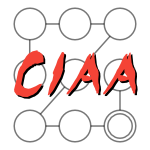 CIAA-2012-Gusev #automaton #bound
CIAA-2012-Gusev #automaton #bound- Synchronizing Automata of Bounded Rank (VVG), pp. 171–179.
 ICALP-v1-2012-BuchbinderNRS #algorithm #approximate #constraints #online
ICALP-v1-2012-BuchbinderNRS #algorithm #approximate #constraints #online- Approximation Algorithms for Online Weighted Rank Function Maximization under Matroid Constraints (NB, JN, RR, MS), pp. 145–156.
 CIKM-2012-AgarwalRSMLGF #learning #robust
CIKM-2012-AgarwalRSMLGF #learning #robust- Learning to rank for robust question answering (AA, HR, KS, PM, RDL, DG, JF), pp. 833–842.
 CIKM-2012-CaiZ #injection #learning
CIKM-2012-CaiZ #injection #learning- Variance maximization via noise injection for active sampling in learning to rank (WC, YZ), pp. 1809–1813.
 CIKM-2012-KanhabuaN #learning #query
CIKM-2012-KanhabuaN #learning #query- Learning to rank search results for time-sensitive queries (NK, KN), pp. 2463–2466.
 CIKM-2012-MacdonaldSO #learning #on the #query
CIKM-2012-MacdonaldSO #learning #on the #query- On the usefulness of query features for learning to rank (CM, RLTS, IO), pp. 2559–2562.
 CIKM-2012-SunWGM #hybrid #learning #recommendation
CIKM-2012-SunWGM #hybrid #learning #recommendation- Learning to rank for hybrid recommendation (JS, SW, BJG, JM), pp. 2239–2242.
 CIKM-2012-VolkovsLZ #learning
CIKM-2012-VolkovsLZ #learning- Learning to rank by aggregating expert preferences (MV, HL, RSZ), pp. 843–851.
 CIKM-2012-ZhangHLL #learning #realtime #twitter
CIKM-2012-ZhangHLL #learning #realtime #twitter- Query-biased learning to rank for real-time twitter search (XZ, BH, TL, BL), pp. 1915–1919.
 CIKM-2012-ZhouZ #debugging #learning
CIKM-2012-ZhouZ #debugging #learning- Learning to rank duplicate bug reports (JZ, HZ), pp. 852–861.
 ECIR-2012-Lubell-DoughtieH #feedback #learning
ECIR-2012-Lubell-DoughtieH #feedback #learning- Learning to Rank from Relevance Feedback for e-Discovery (PLD, KH), pp. 535–539.
 ICML-2012-KarbasiIM #learning
ICML-2012-KarbasiIM #learning- Comparison-Based Learning with Rank Nets (AK, SI, LM), p. 161.
 ICML-2012-KiralyT #algebra #approach #combinator #matrix
ICML-2012-KiralyT #algebra #approach #combinator #matrix- A Combinatorial Algebraic Approach for the Identifiability of Low-Rank Matrix Completion (FJK, RT), p. 100.
 ICML-2012-SavalleRV #estimation #matrix
ICML-2012-SavalleRV #estimation #matrix- Estimation of Simultaneously Sparse and Low Rank Matrices (PAS, ER, NV), p. 11.
 ICML-2012-YangO #clustering #composition #matrix #probability
ICML-2012-YangO #clustering #composition #matrix #probability- Clustering by Low-Rank Doubly Stochastic Matrix Decomposition (ZY, EO), p. 94.
 ICML-2012-ZhangLLR #composition
ICML-2012-ZhangLLR #composition- Improved Nystrom Low-rank Decomposition with Priors (KZ, LL, JL, AR), p. 22.
 ICPR-2012-AbeOD #image #learning
ICPR-2012-AbeOD #image #learning- Recognizing surface qualities from natural images based on learning to rank (TA, TO, KD), pp. 3712–3715.
 ICPR-2012-ArpitSF #recognition
ICPR-2012-ArpitSF #recognition- Locality-constrained Low Rank Coding for face recognition (DA, GS, YF), pp. 1687–1690.
 ICPR-2012-GuyonBZ #constraints #detection #matrix #robust
ICPR-2012-GuyonBZ #constraints #detection #matrix #robust- Foreground detection via robust low rank matrix factorization including spatial constraint with Iterative reweighted regression (CG, TB, EHZ), pp. 2805–2808.
 KDD-2012-BahmaniKMU #evolution #graph
KDD-2012-BahmaniKMU #evolution #graph- PageRank on an evolving graph (BB, RK, MM, EU), pp. 24–32.
 KDD-2012-FujiwaraNYSO #assurance #performance #personalisation
KDD-2012-FujiwaraNYSO #assurance #performance #personalisation- Efficient personalized pagerank with accuracy assurance (YF, MN, TY, HS, MO), pp. 15–23.
 KDD-2012-HsiehCD #modelling #network
KDD-2012-HsiehCD #modelling #network- Low rank modeling of signed networks (CJH, KYC, ISD), pp. 507–515.
 KDD-2012-XiangZSY
KDD-2012-XiangZSY - Optimal exact least squares rank minimization (SX, YZ, XS, JY), pp. 480–488.
 KDD-2012-ZhangL #component #constraints #mining #recognition
KDD-2012-ZhangL #component #constraints #mining #recognition- Mining discriminative components with low-rank and sparsity constraints for face recognition (QZ, BL), pp. 1469–1477.
 RecSys-2012-Diaz-AvilesGN #recommendation
RecSys-2012-Diaz-AvilesGN #recommendation- Swarming to rank for recommender systems (EDA, MG, WN), pp. 229–232.
 RecSys-2012-ShiKBLOH #collaboration #learning #named
RecSys-2012-ShiKBLOH #collaboration #learning #named- CLiMF: learning to maximize reciprocal rank with collaborative less-is-more filtering (YS, AK, LB, ML, NO, AH), pp. 139–146.
 SIGIR-2012-ChandarC12a #using
SIGIR-2012-ChandarC12a #using- Using PageRank to infer user preferences (PC, BC), pp. 1167–1168.
 SIGIR-2012-HongBAD #learning #social
SIGIR-2012-HongBAD #learning #social- Learning to rank social update streams (LH, RB, JA, BDD), pp. 651–660.
 SIGIR-2012-LogachevS #optimisation #parametricity
SIGIR-2012-LogachevS #optimisation #parametricity- Optimizing parameters of the expected reciprocal rank (YL, PS), pp. 1123–1124.
 SIGIR-2012-MacdonaldTO12a #effectiveness #learning #safety
SIGIR-2012-MacdonaldTO12a #effectiveness #learning #safety- Effect of dynamic pruning safety on learning to rank effectiveness (CM, NT, IO), pp. 1051–1052.
 SIGIR-2012-NiuGLC #evaluation #learning #ranking
SIGIR-2012-NiuGLC #evaluation #learning #ranking- Top-k learning to rank: labeling, ranking and evaluation (SN, JG, YL, XC), pp. 751–760.
 PDP-2012-RungsawangM #clustering #gpu #performance
PDP-2012-RungsawangM #clustering #gpu #performance- Fast PageRank Computation on a GPU Cluster (AR, BM), pp. 450–456.
 STOC-2012-CheungKL #algorithm #matrix #performance
STOC-2012-CheungKL #algorithm #matrix #performance- Fast matrix rank algorithms and applications (HYC, TCK, LCL), pp. 549–562.
 STOC-2012-ForbesS #on the #testing
STOC-2012-ForbesS #on the #testing- On identity testing of tensors, low-rank recovery and compressed sensing (MAF, AS), pp. 163–172.
 ICDAR-2011-ZhangS
ICDAR-2011-ZhangS - Circle Text Expansion as Low-Rank Textures (XZ, FS), pp. 202–206.
 SIGMOD-2011-BahmaniCX #performance #personalisation #pipes and filters
SIGMOD-2011-BahmaniCX #performance #personalisation #pipes and filters- Fast personalized PageRank on MapReduce (BB, KC, DX), pp. 973–984.
 VLDB-2011-XieLW #constraints #performance
VLDB-2011-XieLW #constraints #performance- Efficient Rank Join with Aggregation Constraints (MX, LVSL, PTW), pp. 1201–1212.
 CHI-2011-WobbrockFGH #analysis #parametricity #using
CHI-2011-WobbrockFGH #analysis #parametricity #using- The aligned rank transform for nonparametric factorial analyses using only anova procedures (JOW, LF, DG, JJH), pp. 143–146.
 CIKM-2011-BressanP #ranking
CIKM-2011-BressanP #ranking- Local computation of PageRank: the ranking side (MB, LP), pp. 631–640.
 CIKM-2011-CoffmanW #keyword #learning #relational
CIKM-2011-CoffmanW #keyword #learning #relational- Learning to rank results in relational keyword search (JC, ACW), pp. 1689–1698.
 CIKM-2011-GiannopoulosBDS #learning
CIKM-2011-GiannopoulosBDS #learning- Learning to rank user intent (GG, UB, TD, TKS), pp. 195–200.
 CIKM-2011-LinLWX #learning
CIKM-2011-LinLWX #learning- Learning to rank with cross entropy (YL, HL, JW, KX), pp. 2057–2060.
 CIKM-2011-SzummerY #learning
CIKM-2011-SzummerY #learning- Semi-supervised learning to rank with preference regularization (MS, EY), pp. 269–278.
 CIKM-2011-TangLYSGGYZ #behaviour #learning
CIKM-2011-TangLYSGGYZ #behaviour #learning- Learning to rank audience for behavioral targeting in display ads (JT, NL, JY, YS, SG, BG, SY, MZ), pp. 605–610.
 CIKM-2011-UllegaddiV #category theory #learning #query #web
CIKM-2011-UllegaddiV #category theory #learning #query #web- Learning to rank categories for web queries (PU, VV), pp. 2065–2068.
 CIKM-2011-WangL #framework #learning #named
CIKM-2011-WangL #framework #learning #named- CoRankBayes: bayesian learning to rank under the co-training framework and its application in keyphrase extraction (CW, SL), pp. 2241–2244.
 ECIR-2011-HofmannWR #learning #online
ECIR-2011-HofmannWR #learning #online- Balancing Exploration and Exploitation in Learning to Rank Online (KH, SW, MdR), pp. 251–263.
 ICML-2011-MachartPARG #kernel #learning #probability
ICML-2011-MachartPARG #kernel #learning #probability- Stochastic Low-Rank Kernel Learning for Regression (PM, TP, SA, LR, HG), pp. 969–976.
 ICML-2011-Shalev-ShwartzGS #constraints #scalability
ICML-2011-Shalev-ShwartzGS #constraints #scalability- Large-Scale Convex Minimization with a Low-Rank Constraint (SSS, AG, OS), pp. 329–336.
 ICML-2011-VattaniCG #personalisation
ICML-2011-VattaniCG #personalisation- Preserving Personalized Pagerank in Subgraphs (AV, DC, MG), pp. 793–800.
 KDD-2011-ChenZY #learning #multi #robust
KDD-2011-ChenZY #learning #multi #robust- Integrating low-rank and group-sparse structures for robust multi-task learning (JC, JZ, JY), pp. 42–50.
 KDD-2011-GleichL
KDD-2011-GleichL - Rank aggregation via nuclear norm minimization (DFG, LHL), pp. 60–68.
 KDIR-2011-FilhoRM #learning #named
KDIR-2011-FilhoRM #learning #named- XHITS: Learning to Rank in a Hyperlinked Structure (FBF, RPR, RLM), pp. 385–389.
 RecSys-2011-KimE #personalisation #recommendation
RecSys-2011-KimE #personalisation #recommendation- Personalized PageRank vectors for tag recommendations: inside FolkRank (HNK, AES), pp. 45–52.
 RecSys-2011-VargasC #metric #recommendation
RecSys-2011-VargasC #metric #recommendation- Rank and relevance in novelty and diversity metrics for recommender systems (SV, PC), pp. 109–116.
 SIGIR-2011-DaiSD #learning
SIGIR-2011-DaiSD #learning- Learning to rank for freshness and relevance (ND, MS, BDD), pp. 95–104.
 SIGIR-2011-DaiSD11a #learning #multi #optimisation
SIGIR-2011-DaiSD11a #learning #multi #optimisation- Multi-objective optimization in learning to rank (ND, MS, BDD), pp. 1241–1242.
 SIGIR-2011-KumarL #learning
SIGIR-2011-KumarL #learning- Learning to rank from a noisy crowd (AK, ML), pp. 1221–1222.
 SIGIR-2011-PolitzS #constraints #learning
SIGIR-2011-PolitzS #constraints #learning- Learning to rank under tight budget constraints (CP, RS), pp. 1173–1174.
 SIGIR-2011-WangGWL #information retrieval #learning #parallel
SIGIR-2011-WangGWL #information retrieval #learning #parallel- Parallel learning to rank for information retrieval (SW, BJG, KW, HWL), pp. 1083–1084.
 SIGIR-2011-WuYLLYX #learning #using
SIGIR-2011-WuYLLYX #learning #using- Learning to rank using query-level regression (JW, ZY, YL, HL, ZY, KX), pp. 1091–1092.
 STOC-2011-BarakDYW #bound #design #geometry #matrix
STOC-2011-BarakDYW #bound #design #geometry #matrix- Rank bounds for design matrices with applications toc ombinatorial geometry and locally correctable codes (BB, ZD, AY, AW), pp. 519–528.
 STOC-2011-BurgisserI #complexity #geometry
STOC-2011-BurgisserI #complexity #geometry- Geometric complexity theory and tensor rank (PB, CI), pp. 509–518.
 VLDB-2010-MartinenghiT #proximity
VLDB-2010-MartinenghiT #proximity- Proximity Rank Join (DM, MT), pp. 352–363.
 VLDB-2011-BahmaniCG10 #incremental #performance #personalisation
VLDB-2011-BahmaniCG10 #incremental #performance #personalisation- Fast Incremental and Personalized PageRank (BB, AC, AG), pp. 173–184.
 ICALP-v1-2010-BrietFV #constraints #problem
ICALP-v1-2010-BrietFV #constraints #problem- The Positive Semidefinite Grothendieck Problem with Rank Constraint (JB, FMdOF, FV), pp. 31–42.
 CIKM-2010-BilottiECN #constraints #learning #semantics
CIKM-2010-BilottiECN #constraints #learning #semantics- Rank learning for factoid question answering with linguistic and semantic constraints (MWB, JLE, JGC, EN), pp. 459–468.
 CIKM-2010-FengZXY #crawling #using
CIKM-2010-FengZXY #crawling #using- Focused crawling using navigational rank (SF, LZ, YX, CY), pp. 1513–1516.
 CIKM-2010-HeMW #algorithm #evaluation #learning #metric #optimisation
CIKM-2010-HeMW #algorithm #evaluation #learning #metric #optimisation- Directly optimizing evaluation measures in learning to rank based on the clonal selection algorithm (QH, JM, SW), pp. 1449–1452.
 CIKM-2010-LadY #documentation #feedback #learning #novel
CIKM-2010-LadY #documentation #feedback #learning #novel- Learning to rank relevant and novel documents through user feedback (AL, YY), pp. 469–478.
 CIKM-2010-LinLYJS #learning
CIKM-2010-LinLYJS #learning- Learning to rank with groups (YL, HL, ZY, SJ, XS), pp. 1589–1592.
 ECIR-2010-ZucconA #documentation #probability #quantum #ranking #using
ECIR-2010-ZucconA #documentation #probability #quantum #ranking #using- Using the Quantum Probability Ranking Principle to Rank Interdependent Documents (GZ, LA), pp. 357–369.
 ICML-2010-LiuLY #representation #robust #segmentation
ICML-2010-LiuLY #representation #robust #segmentation- Robust Subspace Segmentation by Low-Rank Representation (GL, ZL, YY), pp. 663–670.
 ICML-2010-McFeeL #learning #metric
ICML-2010-McFeeL #learning #metric- Metric Learning to Rank (BM, GRGL), pp. 775–782.
 ICML-2010-NegahbanW #estimation #matrix #scalability
ICML-2010-NegahbanW #estimation #matrix #scalability- Estimation of (near) low-rank matrices with noise and high-dimensional scaling (SN, MJW), pp. 823–830.
 ICML-2010-TomiokaSSK #algorithm #learning #matrix #performance
ICML-2010-TomiokaSSK #algorithm #learning #matrix #performance- A Fast Augmented Lagrangian Algorithm for Learning Low-Rank Matrices (RT, TS, MS, HK), pp. 1087–1094.
 ICPR-2010-AshrafSF #constraints #invariant #recognition #using
ICPR-2010-AshrafSF #constraints #invariant #recognition #using- View-Invariant Action Recognition Using Rank Constraint (NA, YS, HF), pp. 3611–3614.
 KDD-2010-ChenLY #learning #multi
KDD-2010-ChenLY #learning #multi- Learning incoherent sparse and low-rank patterns from multiple tasks (JC, JL, JY), pp. 1179–1188.
 RecSys-2010-BaltrunasMR #collaboration #recommendation
RecSys-2010-BaltrunasMR #collaboration #recommendation- Group recommendations with rank aggregation and collaborative filtering (LB, TM, FR), pp. 119–126.
 RecSys-2010-ShiLH #collaboration #learning #matrix
RecSys-2010-ShiLH #collaboration #learning #matrix- List-wise learning to rank with matrix factorization for collaborative filtering (YS, ML, AH), pp. 269–272.
 SIGIR-2010-ChenMCRH #detection #web
SIGIR-2010-ChenMCRH #detection #web- Web page publication time detection and its application for page rank (ZC, JM, CC, HR, SH), pp. 859–860.
 SIGIR-2010-DangBC #learning #query
SIGIR-2010-DangBC #learning #query- Learning to rank query reformulations (VD, MB, WBC), pp. 807–808.
 SIGIR-2010-GaoCWZ #learning #using
SIGIR-2010-GaoCWZ #learning #using- Learning to rank only using training data from related domain (WG, PC, KFW, AZ), pp. 162–169.
 SIGIR-2010-Liu #information retrieval #learning
SIGIR-2010-Liu #information retrieval #learning- Learning to rank for information retrieval (TYL), p. 904.
 SIGIR-2010-LiuYSCCL #behaviour #learning
SIGIR-2010-LiuYSCCL #behaviour #learning- Learning to rank audience for behavioral targeting (NL, JY, DS, DC, ZC, YL), pp. 719–720.
 SIGIR-2010-WangLM #learning
SIGIR-2010-WangLM #learning- Learning to efficiently rank (LW, JJL, DM), pp. 138–145.
 SIGMOD-2009-FingerP #algorithm #evaluation #performance #robust
SIGMOD-2009-FingerP #algorithm #evaluation #performance #robust- Robust and efficient algorithms for rank join evaluation (JF, NP), pp. 415–428.
 ICPC-J-2008-HindleGH09 #complexity #using
ICPC-J-2008-HindleGH09 #complexity #using- Reading beside the lines: Using indentation to rank revisions by complexity (AH, MWG, RCH), pp. 414–429.
 TLCA-2009-Urzyczyn
TLCA-2009-Urzyczyn - Inhabitation of Low-Rank Intersection Types (PU), pp. 356–370.
 ICEIS-AIDSS-2009-AbdoIE #algorithm
ICEIS-AIDSS-2009-AbdoIE #algorithm- Ant PageRank Algorithm (MZA, MAI, MIE), pp. 73–79.
 CIKM-2009-BaiZXZSTZC #learning #multi #web
CIKM-2009-BaiZXZSTZC #learning #multi #web- Multi-task learning for learning to rank in web search (JB, KZ, GRX, HZ, GS, BLT, ZZ, YC), pp. 1549–1552.
 CIKM-2009-ChapelleMZG
CIKM-2009-ChapelleMZG - Expected reciprocal rank for graded relevance (OC, DM, YZ, PG), pp. 621–630.
 CIKM-2009-ChenWL #kernel #learning #novel
CIKM-2009-ChenWL #kernel #learning #novel- Learning to rank with a novel kernel perceptron method (XwC, HW, XL), pp. 505–512.
 CIKM-2009-HeZSC #clustering #data type #multi #query
CIKM-2009-HeZSC #clustering #data type #multi #query- Cluster based rank query over multidimensional data streams (DH, YZ, LS, GC), pp. 1493–1496.
 CIKM-2009-KuoCW #learning
CIKM-2009-KuoCW #learning- Learning to rank from Bayesian decision inference (JWK, PJC, HMW), pp. 827–836.
 CIKM-2009-ShiLMW
CIKM-2009-ShiLMW - Nonlinear static-rank computation (SS, BL, YM, JRW), pp. 807–816.
 CIKM-2009-SunMG09a #graph #learning #online
CIKM-2009-SunMG09a #graph #learning #online- Learning to rank graphs for online similar graph search (BS, PM, CLG), pp. 1871–1874.
 CIKM-2009-WangML #learning #programming #question #search-based #using
CIKM-2009-WangML #learning #programming #question #search-based #using- Learning to rank using evolutionary computation: immune programming or genetic programming? (SW, JM, JL), pp. 1879–1882.
 CIKM-2009-WuCZZ #approach #definite clause grammar #learning #novel #using
CIKM-2009-WuCZZ #approach #definite clause grammar #learning #novel #using- Smoothing DCG for learning to rank: a novel approach using smoothed hinge functions (MW, YC, ZZ, HZ), pp. 1923–1926.
 ECIR-2009-DonmezC #learning #optimisation
ECIR-2009-DonmezC #learning #optimisation- Active Sampling for Rank Learning via Optimizing the Area under the ROC Curve (PD, JGC), pp. 78–89.
 ECIR-2009-LeaseAC #learning #query
ECIR-2009-LeaseAC #learning #query- Regression Rank: Learning to Meet the Opportunity of Descriptive Queries (ML, JA, WBC), pp. 90–101.
 SIGIR-2009-BanerjeeCR #learning #query
SIGIR-2009-BanerjeeCR #learning #query- Learning to rank for quantity consensus queries (SB, SC, GR), pp. 243–250.
 SIGIR-2009-Carterette #correlation #distance #on the #ranking
SIGIR-2009-Carterette #correlation #distance #on the #ranking- On rank correlation and the distance between rankings (BC), pp. 436–443.
 SIGIR-2009-CormackCB #learning
SIGIR-2009-CormackCB #learning- Reciprocal rank fusion outperforms condorcet and individual rank learning methods (GVC, CLAC, SB), pp. 758–759.
 SIGIR-2009-PesericoP #convergence
SIGIR-2009-PesericoP #convergence- Score and rank convergence of HITS (EP, LP), pp. 770–771.
 SIGIR-2009-SunQTW #learning #metric #ranking #robust
SIGIR-2009-SunQTW #learning #metric #ranking #robust- Robust sparse rank learning for non-smooth ranking measures (ZS, TQ, QT, JW), pp. 259–266.
 SIGIR-2009-YilmazR #learning
SIGIR-2009-YilmazR #learning- Deep versus shallow judgments in learning to rank (EY, SR), pp. 662–663.
 STOC-2009-NguyenDT #algorithm #approximate #matrix #performance
STOC-2009-NguyenDT #algorithm #approximate #matrix #performance- A fast and efficient algorithm for low-rank approximation of a matrix (NHN, TTD, TDT), pp. 215–224.
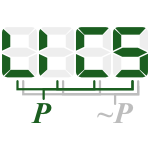 LICS-2009-DawarGHL #logic
LICS-2009-DawarGHL #logic- Logics with Rank Operators (AD, MG, BH, BL), pp. 113–122.
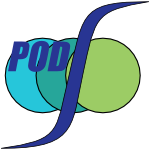 PODS-2008-SarmaGP #graph
PODS-2008-SarmaGP #graph- Estimating PageRank on graph streams (ADS, SG, RP), pp. 69–78.
 PODS-2008-SchnaitterP
PODS-2008-SchnaitterP - Evaluating rank joins with optimal cost (KS, NP), pp. 43–52.
 SIGMOD-2008-AndoniFKPS #classification #performance #similarity
SIGMOD-2008-AndoniFKPS #classification #performance #similarity- Corrigendum to “efficient similarity search and classification via rank aggregation” by Ronald Fagin, Ravi Kumar and D. Sivakumar (proc. SIGMOD’03) (AA, RF, RK, MP, DS), pp. 1375–1376.
 CIKM-2008-Bar-YossefM #approximate
CIKM-2008-Bar-YossefM #approximate- Local approximation of pagerank and reverse pagerank (ZBY, LTM), pp. 279–288.
 CIKM-2008-NguyenS08a #correlation #order #query
CIKM-2008-NguyenS08a #correlation #order #query- Polyhedral transformation for indexed rank order correlation queries (PN, NS), pp. 1477–1478.
 CIKM-2008-VinayMC #effectiveness #retrieval #using
CIKM-2008-VinayMC #effectiveness #retrieval #using- Estimating retrieval effectiveness using rank distributions (VV, NMF, IJC), pp. 1425–1426.
 CIKM-2008-WijayaB #random #rating
CIKM-2008-WijayaB #random #rating- A random walk on the red carpet: rating movies with user reviews and pagerank (DTW, SB), pp. 951–960.
 ICML-2008-DonmezC #learning #optimisation #reduction
ICML-2008-DonmezC #learning #optimisation #reduction- Optimizing estimated loss reduction for active sampling in rank learning (PD, JGC), pp. 248–255.
 ICML-2008-KlementievRS #modelling
ICML-2008-KlementievRS #modelling- Unsupervised rank aggregation with distance-based models (AK, DR, KS), pp. 472–479.
 ICML-2008-LanLQML #learning
ICML-2008-LanLQML #learning- Query-level stability and generalization in learning to rank (YL, TYL, TQ, ZM, HL), pp. 512–519.
 ICML-2008-MekaJCD #learning #online
ICML-2008-MekaJCD #learning #online- Rank minimization via online learning (RM, PJ, CC, ISD), pp. 656–663.
 ICML-2008-XiaLWZL #algorithm #approach #learning
ICML-2008-XiaLWZL #algorithm #approach #learning- Listwise approach to learning to rank: theory and algorithm (FX, TYL, JW, WZ, HL), pp. 1192–1199.
 ICML-2008-ZhangTK #analysis #approximate #fault
ICML-2008-ZhangTK #analysis #approximate #fault- Improved Nyström low-rank approximation and error analysis (KZ, IWT, JTK), pp. 1232–1239.
 KDD-2008-EshghiR #locality #order #statistics
KDD-2008-EshghiR #locality #order #statistics- Locality sensitive hash functions based on concomitant rank order statistics (KE, SR), pp. 221–229.
 SIGIR-2008-AvrachenkovDNPS #clustering #documentation #hypermedia
SIGIR-2008-AvrachenkovDNPS #clustering #documentation #hypermedia- Pagerank based clustering of hypertext document collections (KA, VD, DN, SKP, ES), pp. 873–874.
 SIGIR-2008-Bar-YossefM #approximate
SIGIR-2008-Bar-YossefM #approximate- Local approximation of PageRank and reverse PageRank (ZBY, LTM), pp. 865–866.
 SIGIR-2008-DuhK #learning
SIGIR-2008-DuhK #learning- Learning to rank with partially-labeled data (KD, KK), pp. 251–258.
 SIGIR-2008-GuiverS #learning #process
SIGIR-2008-GuiverS #learning #process- Learning to rank with SoftRank and Gaussian processes (JG, ES), pp. 259–266.
 SIGIR-2008-LiuGLZMHL #named #web
SIGIR-2008-LiuGLZMHL #named #web- BrowseRank: letting web users vote for page importance (YL, BG, TYL, YZ, ZM, SH, HL), pp. 451–458.
 SIGIR-2008-VelosoAGM #learning #using
SIGIR-2008-VelosoAGM #learning #using- Learning to rank at query-time using association rules (AV, HMdA, MAG, WMJ), pp. 267–274.
 SIGIR-2008-XuLLLM #evaluation #learning #metric #optimisation
SIGIR-2008-XuLLLM #evaluation #learning #metric #optimisation- Directly optimizing evaluation measures in learning to rank (JX, TYL, ML, HL, WYM), pp. 107–114.
 SIGIR-2008-YilmazAR #correlation #information retrieval
SIGIR-2008-YilmazAR #correlation #information retrieval- A new rank correlation coefficient for information retrieval (EY, JAA, SR), pp. 587–594.
 SIGIR-2008-ZhangZL #algorithm #recommendation #topic
SIGIR-2008-ZhangZL #algorithm #recommendation #topic- A topical PageRank based algorithm for recommender systems (LZ, KZ, CL), pp. 713–714.
 SIGIR-2008-ZhouXZY #learning
SIGIR-2008-ZhouXZY #learning- Learning to rank with ties (KZ, GRX, HZ, YY), pp. 275–282.
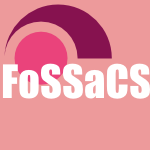 FoSSaCS-2008-PattinsonS #algebra #finite #logic #modelling #semantics
FoSSaCS-2008-PattinsonS #algebra #finite #logic #modelling #semantics- Beyond Rank 1: Algebraic Semantics and Finite Models for Coalgebraic Logics (DP, LS), pp. 66–80.
 VLDB-2007-ChoS #crawling
VLDB-2007-ChoS #crawling- RankMass Crawler: A Crawler with High PageRank Coverage Guarantee (JC, US), pp. 375–386.
 TLCA-2007-Kusmierek #problem
TLCA-2007-Kusmierek #problem- The Inhabitation Problem for Rank Two Intersection Types (DK), pp. 240–254.
 CHI-2007-GuanC #eye tracking #web
CHI-2007-GuanC #eye tracking #web- An eye tracking study of the effect of target rank on web search (ZG, EC), pp. 417–420.
 ICEIS-AIDSS-2007-PessiotTUAG #collaboration #learning
ICEIS-AIDSS-2007-PessiotTUAG #collaboration #learning- Learning to Rank for Collaborative Filtering (JFP, TVT, NU, MRA, PG), pp. 145–151.
 ECIR-2007-MelucciP07a #named #order
ECIR-2007-MelucciP07a #named #order- PageRank: When Order Changes (MM, LP), pp. 581–588.
 ECIR-2007-ZhangQLBL #web
ECIR-2007-ZhangQLBL #web- N -Step PageRank for Web Search (LZ, TQ, TYL, YB, HL), pp. 653–660.
 ICML-2007-AgarwalC #graph #learning #random
ICML-2007-AgarwalC #graph #learning #random- Learning random walks to rank nodes in graphs (AA, SC), pp. 9–16.
 ICML-2007-BusseOB #analysis #clustering
ICML-2007-BusseOB #analysis #clustering- Cluster analysis of heterogeneous rank data (LMB, PO, JMB), pp. 113–120.
 ICML-2007-CaoQLTL #approach #learning
ICML-2007-CaoQLTL #approach #learning- Learning to rank: from pairwise approach to listwise approach (ZC, TQ, TYL, MFT, HL), pp. 129–136.
 MLDM-2007-LiuYWZ
MLDM-2007-LiuYWZ - A Link-Based Rank of Postings in Newsgroup (HL, JY, JW, YZ), pp. 392–403.
 SIGIR-2007-FarahV #approach #information retrieval
SIGIR-2007-FarahV #approach #information retrieval- An outranking approach for rank aggregation in information retrieval (MF, DV), pp. 591–598.
 SIGIR-2007-TroyZ
SIGIR-2007-TroyZ - Enhancing relevance scoring with chronological term rank (ADT, GQZ), pp. 599–606.
 SIGIR-2007-WicksG #parallel #performance
SIGIR-2007-WicksG #parallel #performance- More efficient parallel computation of pagerank (JRW, AG), pp. 861–862.
 SIGIR-2007-WuLW #probability #ranking
SIGIR-2007-WuLW #probability #ranking- Probability ranking principle via optimal expected rank (HCW, RWPL, KFW), pp. 713–714.
 SIGIR-2007-XuL07a #learning
SIGIR-2007-XuL07a #learning- Learning to rank collections (JX, XL), pp. 765–766.
 PPoPP-2007-SaitoT
PPoPP-2007-SaitoT - Locality-aware connection management and rank assignment for wide-area MPI (HS, KT), pp. 150–151.
 STOC-2007-Dantchev #complexity #proving
STOC-2007-Dantchev #complexity #proving- Rank complexity gap for Lovász-Schrijver and Sherali-Adams proof systems (SSD), pp. 311–317.
 STOC-2007-Kenyon-MathieuS #fault #how
STOC-2007-Kenyon-MathieuS #fault #how- How to rank with few errors (CKM, WS), pp. 95–103.
 CSL-2007-FinkelL
CSL-2007-FinkelL - There Exist Some ω-Powers of Any Borel Rank (OF, DL), pp. 115–129.
 VLDB-2006-ParreiraDMW #approximate #distributed #network #peer-to-peer #performance #web
VLDB-2006-ParreiraDMW #approximate #distributed #network #peer-to-peer #performance #web- Efficient and Decentralized PageRank Approximation in a Peer-to-Peer Web Search Network (JXP, DD, SM, GW), pp. 415–426.
 ICALP-v1-2006-FrandsenF #matrix
ICALP-v1-2006-FrandsenF #matrix- Dynamic Matrix Rank (GSF, PFF), pp. 395–406.
 ICALP-v1-2006-Golynski #bound
ICALP-v1-2006-Golynski #bound- Optimal Lower Bounds for Rank and Select Indexes (AG), pp. 370–381.
 ICFP-2006-VytiniotisWJ
ICFP-2006-VytiniotisWJ - Boxy types: inference for higher-rank types and impredicativity (DV, SW, SLPJ), pp. 251–262.
 CIKM-2006-BerberichBW #graph #performance #web
CIKM-2006-BerberichBW #graph #performance #web- Rank synopses for efficient time travel on the web graph (KB, SJB, GW), pp. 864–865.
 ECIR-2006-FernandezVC #normalisation #probability
ECIR-2006-FernandezVC #normalisation #probability- Probabilistic Score Normalization for Rank Aggregation (MF, DV, PC), pp. 553–556.
 ECIR-2006-KohlschutterCN #parallel #performance
ECIR-2006-KohlschutterCN #parallel #performance- Efficient Parallel Computation of PageRank (CK, PAC, WN), pp. 241–252.
 ECIR-2006-YinP #adaptation #classification #naive bayes
ECIR-2006-YinP #adaptation #classification #naive bayes- Adapting the Naive Bayes Classifier to Rank Procedural Texts (LY, RP), pp. 179–190.
 ICML-2006-KulisSD #kernel #learning #matrix
ICML-2006-KulisSD #kernel #learning #matrix- Learning low-rank kernel matrices (BK, MAS, ISD), pp. 505–512.
 KDD-2006-AgarwalCA #learning
KDD-2006-AgarwalCA #learning- Learning to rank networked entities (AA, SC, SA), pp. 14–23.
 KDD-2006-DavisD #community #web
KDD-2006-DavisD #community #web- Estimating the global pagerank of web communities (JVD, ISD), pp. 116–125.
 SIGIR-2006-Baeza-YatesBC #algorithm #ranking
SIGIR-2006-Baeza-YatesBC #algorithm #ranking- Generalizing PageRank: damping functions for link-based ranking algorithms (RABY, PB, CC), pp. 308–315.
 SIGIR-2006-FernandezVC #using
SIGIR-2006-FernandezVC #using- Using historical data to enhance rank aggregation (MF, DV, PC), pp. 643–644.
 DAC-2006-YangCGJ #algorithm #matrix #parallel #scalability
DAC-2006-YangCGJ #algorithm #matrix #parallel #scalability- A parallel low-rank multilevel matrix compression algorithm for parasitic extraction of electrically large structures (CY, SC, DG, VJ), pp. 1053–1056.
 PDP-2006-RungsawangM #adaptation #parallel
PDP-2006-RungsawangM #adaptation #parallel- Parallel Adaptive Technique for Computing PageRank (AR, BM), pp. 15–50.
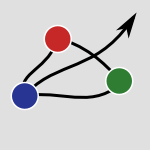 HT-2005-HorieYK #analysis #higher-order #web
HT-2005-HorieYK #analysis #higher-order #web- Higher-order rank analysis for web structure (IH, KY, KK), pp. 98–106.
 CIAA-2005-Shcherbak #automaton
CIAA-2005-Shcherbak #automaton- The Interval Rank of Monotonic Automata (TS), pp. 273–281.
 CIKM-2005-ZhuYL #distributed
CIKM-2005-ZhuYL #distributed- Distributed PageRank computation based on iterative aggregation-disaggregation methods (YZ, SY, XL), pp. 578–585.
 ICML-2005-BachJ #composition #kernel #predict
ICML-2005-BachJ #composition #kernel #predict- Predictive low-rank decomposition for kernel methods (FRB, MIJ), pp. 33–40.
 ICML-2005-BurgesSRLDHH #learning #using
ICML-2005-BurgesSRLDHH #learning #using- Learning to rank using gradient descent (CJCB, TS, ER, AL, MD, NH, GNH), pp. 89–96.
 KDD-2005-RadlinskiJ #feedback #learning #query
KDD-2005-RadlinskiJ #feedback #learning #query- Query chains: learning to rank from implicit feedback (FR, TJ), pp. 239–248.
 SIGIR-2005-KurlandL #modelling #ranking #using
SIGIR-2005-KurlandL #modelling #ranking #using- PageRank without hyperlinks: structural re-ranking using links induced by language models (OK, LL), pp. 306–313.
 SIGIR-2005-WangST
SIGIR-2005-WangST - Dirichlet PageRank (XW, AS, TT), pp. 661–662.
 SAC-2005-TarauMF #documentation #semantics
SAC-2005-TarauMF #documentation #semantics- Semantic document engineering with WordNet and PageRank (PT, RM, EF), pp. 782–786.
 SAT-J-2004-GalesiK05 #polynomial #satisfiability
SAT-J-2004-GalesiK05 #polynomial #satisfiability- Polynomial Time SAT Decision, Hypergraph Transversals and the Hermitian Rank (NG, OK), pp. 89–104.
 VLDB-2004-WangD #distributed #internet
VLDB-2004-WangD #distributed #internet- Computing PageRank in a Distributed Internet Search Engine System (YW, DJD), pp. 420–431.
 CIKM-2004-ChenGS
CIKM-2004-ChenGS - Local methods for estimating pagerank values (YYC, QG, TS), pp. 381–389.
 ICML-2004-Ye #approximate #matrix
ICML-2004-Ye #approximate #matrix- Generalized low rank approximations of matrices (JY).
 ICPR-v1-2004-MiasnikovH #analysis
ICPR-v1-2004-MiasnikovH #analysis- Regression Analysis and Automorphic Orbits in Free Groups of Rank 2 (ADM, RMH), pp. 180–183.
 KDD-2004-DengPML
KDD-2004-DengPML - A rank sum test method for informative gene discovery (LD, JP, JM, DLL), pp. 410–419.
 DAC-2004-GopeCJ #matrix #modelling #multi #performance
DAC-2004-GopeCJ #matrix #modelling #multi #performance- A fast parasitic extractor based on low-rank multilevel matrix compression for conductor and dielectric modeling in microelectronics and MEMS (DG, SC, VJ), pp. 794–799.
 SAT-2004-GalesiK #polynomial #satisfiability
SAT-2004-GalesiK #polynomial #satisfiability- Polynomial Time SAT Decision, Hypergraph Transversals and the Hermitian Rank (NG, OK), pp. 76–85.
 SIGMOD-2003-FaginKS #classification #performance #similarity
SIGMOD-2003-FaginKS #classification #performance #similarity- Efficient similarity search and classification via rank aggregation (RF, RK, DS), pp. 301–312.
 ICML-2003-SrebroJ #approximate
ICML-2003-SrebroJ #approximate- Weighted Low-Rank Approximations (NS, TSJ), pp. 720–727.
 PPDP-2003-Damiani
PPDP-2003-Damiani - Rank 2 intersection types for modules (FD), pp. 67–78.
 ICSE-2003-InoueYFYMK #component
ICSE-2003-InoueYFYMK #component- Component Rank: Relative Significance Rank for Software Component Search (KI, RY, HF, TY, MM, SK), pp. 14–24.
 SAC-2003-RendaS #web
SAC-2003-RendaS #web- Web Metasearch: Rank vs. Score Based Rank Aggregation Methods (MER, US), pp. 841–846.
 HPDC-2003-SankaralingamSB #distributed
HPDC-2003-SankaralingamSB #distributed- Distributed Pagerank for P2P Systems (KS, SS, JCB), pp. 58–69.
 JCDL-2002-McDonaldC #heuristic #using
JCDL-2002-McDonaldC #heuristic #using- Using sentence-selection heuristics to rank text segments in TXTRACTOR (DM, HC), pp. 28–35.
 CIKM-2002-ChenGS
CIKM-2002-ChenGS - I/O-efficient techniques for computing pagerank (YYC, QG, TS), pp. 549–557.
 ECIR-2002-KimL #algorithm
ECIR-2002-KimL #algorithm- An Improved Computation of the PageRank Algorithm (SJK, SHL), pp. 73–85.
 SIGIR-2002-DingHHZS #analysis #framework
SIGIR-2002-DingHHZS #analysis #framework- PageRank, HITS and a unified framework for link analysis (CHQD, XH, PH, HZ, HDS), pp. 353–354.
 LICS-2002-Leivant #abstraction
LICS-2002-Leivant #abstraction- Calibrating Computational Feasibility by Abstraction Rank (DL), p. 345–?.
 STOC-2001-AchlioptasM #matrix #performance
STOC-2001-AchlioptasM #matrix #performance- Fast computation of low rank matrix (DA, FM), pp. 611–618.
 CSL-2001-Matthes #induction
CSL-2001-Matthes #induction- Monotone Inductive and Coinductive Constructors of Rank 2 (RM), pp. 600–614.
 FoSSaCS-2000-Damiani #type system
FoSSaCS-2000-Damiani #type system- Typing Local Definitions and Conditional Expressions with Rank 2 Intersection (FD), pp. 82–97.
 ICFP-1999-OhoriY #compilation #ml #morphism #polymorphism #type inference
ICFP-1999-OhoriY #compilation #ml #morphism #polymorphism #type inference- Type Inference with Rank 1 Polymorphism for Type-Directed Compilation of ML (AO, NY), pp. 160–171.
 ICPR-1998-SvalbeE #image #locality #metric #using
ICPR-1998-SvalbeE #image #locality #metric #using- Localisation of image features using measures of rank distribution (IDS, CJE), pp. 189–191.
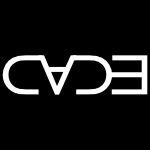 CADE-1998-HortonS #canonical #named #process
CADE-1998-HortonS #canonical #named #process- Rank/Activity: A Canonical Form for Binary Resolution (JDH, BS), pp. 412–426.
 STOC-1996-AllenderBO #complexity #equation #linear #matrix
STOC-1996-AllenderBO #complexity #equation #linear #matrix- The Complexity of Matrix Rank and Feasible Systems of Linear Equations (EA, RB, MO), pp. 161–167.
 ICALP-1989-Hastad
ICALP-1989-Hastad - Tensor Rank is NP-Complete (JH), pp. 451–460.
 STOC-1986-Mulmuley #algorithm #matrix #parallel #performance
STOC-1986-Mulmuley #algorithm #matrix #parallel #performance- A Fast Parallel Algorithm to Compute the Rank of a Matrix over an Arbitrary Field (KM), pp. 338–339.
 ICALP-1980-Bini #approximate
ICALP-1980-Bini #approximate- Border Rank of a p×q×2 Tensor and the Optimal Approximation of a Pair of Bilinear Forms (DB), pp. 98–108.
 SANER-2019-YuBLKYX #empirical #fault #learning #predict
SANER-2019-YuBLKYX #empirical #fault #learning #predict DLT-2019-KariRV #automaton #finite #word
DLT-2019-KariRV #automaton #finite #word CIKM-2019-KuziLSJZ #adaptation #analysis #information retrieval #learning
CIKM-2019-KuziLSJZ #adaptation #analysis #information retrieval #learning CIKM-2019-ZouLAWZ #learning #multi #named
CIKM-2019-ZouLAWZ #learning #multi #named ICML-2019-JunWWN
ICML-2019-JunWWN  ICML-2019-LiLS #learning #online
ICML-2019-LiLS #learning #online ICML-2019-LuiseSPC #predict
ICML-2019-LuiseSPC #predict ICML-2019-NayerNV #matrix #metric
ICML-2019-NayerNV #matrix #metric ICML-2019-SharanTBV #performance
ICML-2019-SharanTBV #performance ICML-2019-TrippeHAB #approximate #named #using
ICML-2019-TrippeHAB #approximate #named #using POPL-2019-DunfieldK #bidirectional #morphism #polymorphism
POPL-2019-DunfieldK #bidirectional #morphism #polymorphism CIKM-2018-AiMLC #learning #theory and practice
CIKM-2018-AiMLC #learning #theory and practice CIKM-2018-FerroLM0 #continuation #education #learning
CIKM-2018-FerroLM0 #continuation #education #learning CIKM-2018-KutluEHL #correlation #metric #order #statistics
CIKM-2018-KutluEHL #correlation #metric #order #statistics CIKM-2018-KwonKC #matrix #self
CIKM-2018-KwonKC #matrix #self CIKM-2018-LoyolaGS #debugging #learning #locality
CIKM-2018-LoyolaGS #debugging #learning #locality CIKM-2018-MouraoM #modelling
CIKM-2018-MouraoM #modelling CIKM-2018-OosterhuisR #learning #online
CIKM-2018-OosterhuisR #learning #online CIKM-2018-SongZWTZJC #graph #learning #named
CIKM-2018-SongZWTZJC #graph #learning #named ICML-2018-ChengDH #learning
ICML-2018-ChengDH #learning ICML-2018-DouikH #clustering #graph #matrix #optimisation #probability
ICML-2018-DouikH #clustering #graph #matrix #optimisation #probability ICML-2018-JawanpuriaM #framework #learning #matrix
ICML-2018-JawanpuriaM #framework #learning #matrix ICML-2018-ZhangWYG #analysis #matrix
ICML-2018-ZhangWYG #analysis #matrix ICPR-2018-DengLLZL #composition #detection
ICPR-2018-DengLLZL #composition #detection ICPR-2018-GuoHSY #classification #multi
ICPR-2018-GuoHSY #classification #multi ICPR-2018-LeiZH0HL #classification #learning #multi
ICPR-2018-LeiZH0HL #classification #learning #multi ICPR-2018-RenZLLWY #learning #representation #robust #taxonomy
ICPR-2018-RenZLLWY #learning #representation #robust #taxonomy ICPR-2018-SunCWX #coordination #learning #metric #online #parallel
ICPR-2018-SunCWX #coordination #learning #metric #online #parallel ICPR-2018-WangZLYQW #adaptation #representation #robust
ICPR-2018-WangZLYQW #adaptation #representation #robust ICPR-2018-XieCL #image #re-engineering
ICPR-2018-XieCL #image #re-engineering ICPR-2018-XueQLJ
ICPR-2018-XueQLJ  KDD-2018-HuDZ0X #analysis #e-commerce #formal method #learning
KDD-2018-HuDZ0X #analysis #e-commerce #formal method #learning KDD-2018-SongXCCT #multi #retrieval
KDD-2018-SongXCCT #multi #retrieval CSL-2018-DawarW #logic #symmetry
CSL-2018-DawarW #logic #symmetry DLT-2017-KuncM
DLT-2017-KuncM  CIKM-2017-Abu-El-HaijaPA #learning #symmetry
CIKM-2017-Abu-El-HaijaPA #learning #symmetry CIKM-2017-EnsanBZK #empirical #learning
CIKM-2017-EnsanBZK #empirical #learning CIKM-2017-OosterhuisR17a #information retrieval #learning #online #quality
CIKM-2017-OosterhuisR17a #information retrieval #learning #online #quality CIKM-2017-ShiLC #continuation #estimation
CIKM-2017-ShiLC #continuation #estimation CIKM-2017-XuLLX #learning
CIKM-2017-XuLLX #learning CIKM-2017-YuCY #algebra #finite #matrix #recommendation
CIKM-2017-YuCY #algebra #finite #matrix #recommendation ECIR-2017-SoldainiG #approach #health #learning #semantics
ECIR-2017-SoldainiG #approach #health #learning #semantics ICML-2017-0001JZ #analysis #geometry #problem
ICML-2017-0001JZ #analysis #geometry #problem ICML-2017-AndersonG #algorithm #approximate #online #performance
ICML-2017-AndersonG #algorithm #approximate #online #performance ICML-2017-ChierichettiG0L #algorithm #approximate
ICML-2017-ChierichettiG0L #algorithm #approximate ICML-2017-JiangKALS #process
ICML-2017-JiangKALS #process ICML-2017-KhannaEDGN #approximate #on the #optimisation
ICML-2017-KhannaEDGN #approximate #on the #optimisation ICML-2017-MohajerSE #learning
ICML-2017-MohajerSE #learning ICML-2017-OngieWNB #algebra #matrix #modelling
ICML-2017-OngieWNB #algebra #matrix #modelling ICML-2017-WangZG #framework #matrix
ICML-2017-WangZG #framework #matrix ICML-2017-ZhaoLW0TY #matrix #network
ICML-2017-ZhaoLW0TY #matrix #network ICML-2017-ZoghiTGKSW #learning #modelling #online #probability
ICML-2017-ZoghiTGKSW #learning #modelling #online #probability KDD-2017-0001YXWY #approximate #effectiveness #named #personalisation
KDD-2017-0001YXWY #approximate #effectiveness #named #personalisation CSL-2017-ChenFH #bound #first-order #logic #quantifier #slicing
CSL-2017-ChenFH #bound #first-order #logic #quantifier #slicing ICPC-2016-TianWLG #debugging #learning #recommendation
ICPC-2016-TianWLG #debugging #learning #recommendation CIKM-2016-CheungL #learning #robust #scalability
CIKM-2016-CheungL #learning #robust #scalability CIKM-2016-DeveaudMN #learning
CIKM-2016-DeveaudMN #learning CIKM-2016-LiSCS #adaptation #effectiveness #on the #query
CIKM-2016-LiSCS #adaptation #effectiveness #on the #query CIKM-2016-LiSNLF #hashtag #learning #recommendation #topic #twitter
CIKM-2016-LiSNLF #hashtag #learning #recommendation #topic #twitter CIKM-2016-LiuLLC #composition #named #personalisation #random #scalability
CIKM-2016-LiuLLC #composition #named #personalisation #random #scalability CIKM-2016-PengKYC #matrix #named #scalability
CIKM-2016-PengKYC #matrix #named #scalability CIKM-2016-SilvaGAG #learning
CIKM-2016-SilvaGAG #learning CIKM-2016-SousaCRMG #feature model #learning
CIKM-2016-SousaCRMG #feature model #learning CIKM-2016-TymoshenkoBM #learning #web
CIKM-2016-TymoshenkoBM #learning #web CIKM-2016-ZhaoK #learning #online #reliability
CIKM-2016-ZhaoK #learning #online #reliability ECIR-2016-BotevaGSR #dataset #information retrieval #learning
ECIR-2016-BotevaGSR #dataset #information retrieval #learning ICML-2016-GuiHG #estimation #matrix #performance #towards
ICML-2016-GuiHG #estimation #matrix #performance #towards ICML-2016-KasaiM #approach
ICML-2016-KasaiM #approach ICML-2016-KatariyaKSW #learning #multi
ICML-2016-KatariyaKSW #learning #multi ICML-2016-KhetanO #data-driven #performance
ICML-2016-KhetanO #data-driven #performance ICML-2016-LiCLYSC #approximate #matrix
ICML-2016-LiCLYSC #approximate #matrix ICML-2016-LiLR #approximate
ICML-2016-LiLR #approximate ICML-2016-ShenLX #clustering #online #taxonomy
ICML-2016-ShenLX #clustering #online #taxonomy ICML-2016-TuBSSR #equation #linear #matrix
ICML-2016-TuBSSR #equation #linear #matrix ICML-2016-UbaruS #matrix #performance #scalability
ICML-2016-UbaruS #matrix #performance #scalability ICML-2016-Wipf #analysis #estimation
ICML-2016-Wipf #analysis #estimation ICPR-2016-Brandtberg #analysis #classification #fourier #fuzzy #multi #order #using
ICPR-2016-Brandtberg #analysis #classification #fourier #fuzzy #multi #order #using ICPR-2016-DaiDCLY #multi #representation #segmentation #using
ICPR-2016-DaiDCLY #multi #representation #segmentation #using ICPR-2016-WangLX #adaptation #image #representation
ICPR-2016-WangLX #adaptation #image #representation ICPR-2016-YaoXG #image #multi
ICPR-2016-YaoXG #image #multi ICPR-2016-YiHLCC #adaptation #re-engineering #representation #taxonomy
ICPR-2016-YiHLCC #adaptation #re-engineering #representation #taxonomy ICPR-2016-YouXLZCTZ #image #matrix
ICPR-2016-YouXLZCTZ #image #matrix KDD-2016-LynchAA #image #learning #multimodal #scalability #semantics #visual notation
KDD-2016-LynchAA #image #learning #multimodal #scalability #semantics #visual notation KDD-2016-ZhangLG #approximate #graph #personalisation
KDD-2016-ZhangLG #approximate #graph #personalisation VLDB-2015-BrancotteYBBDH #analysis
VLDB-2015-BrancotteYBBDH #analysis VLDB-2015-MitliagkasBDC #approximate #exclamation #graph #performance
VLDB-2015-MitliagkasBDC #approximate #exclamation #graph #performance VLDB-2015-MouratidisZP #query
VLDB-2015-MouratidisZP #query CIKM-2015-CarmelHLMR #email
CIKM-2015-CarmelHLMR #email CIKM-2015-KangLHWNXP #learning #similarity
CIKM-2015-KangLHWNXP #learning #similarity CIKM-2015-KangPC #approximate #clustering #robust
CIKM-2015-KangPC #approximate #clustering #robust CIKM-2015-MetrikovPA #crowdsourcing #integration #learning
CIKM-2015-MetrikovPA #crowdsourcing #integration #learning CIKM-2015-TranNKGA #adaptation #learning #summary #timeline
CIKM-2015-TranNKGA #adaptation #learning #summary #timeline CIKM-2015-WangYHWT #clustering #multi #representation
CIKM-2015-WangYHWT #clustering #multi #representation CIKM-2015-YeZMJZ #approach #consistency #learning #multi #privacy
CIKM-2015-YeZMJZ #approach #consistency #learning #multi #privacy ECIR-2015-NicosiaBM #learning
ECIR-2015-NicosiaBM #learning ICML-2015-AvronH #community #detection #personalisation #using
ICML-2015-AvronH #community #detection #personalisation #using ICML-2015-ChenS
ICML-2015-ChenS  ICML-2015-HazanLM #classification
ICML-2015-HazanLM #classification ICML-2015-KvetonSWA #learning
ICML-2015-KvetonSWA #learning ICML-2015-PrasadPR #analysis #axiom
ICML-2015-PrasadPR #analysis #axiom ICML-2015-TewariC #bound #documentation #fault #learning #matter #question
ICML-2015-TewariC #bound #documentation #fault #learning #matter #question ICML-2015-UbaruMS #approximate #fault #matrix #using
ICML-2015-UbaruMS #approximate #fault #matrix #using ICML-2015-XinW #adaptation #probability
ICML-2015-XinW #adaptation #probability ICML-2015-YuCL #learning #multi #online
ICML-2015-YuCL #learning #multi #online ICML-2015-ZhangWJ #algorithm #bound #distributed #estimation #matrix #performance
ICML-2015-ZhangWJ #algorithm #bound #distributed #estimation #matrix #performance ICML-2015-ZukW #matrix #metric
ICML-2015-ZukW #matrix #metric KDD-2015-HouWGD #clustering #programming
KDD-2015-HouWGD #clustering #programming KDD-2015-OhsakaMK #evolution #network #performance
KDD-2015-OhsakaMK #evolution #network #performance KDD-2015-PengKLC #approximate #clustering #using
KDD-2015-PengKLC #approximate #clustering #using KDD-2015-XieBDG #performance #personalisation
KDD-2015-XieBDG #performance #personalisation SIGIR-2015-LuccheseNOPTV #algorithm #documentation #named #performance
SIGIR-2015-LuccheseNOPTV #algorithm #documentation #named #performance SIGIR-2015-MehrotraY #learning #query #using
SIGIR-2015-MehrotraY #learning #query #using SIGIR-2015-SeverynM #learning #network
SIGIR-2015-SeverynM #learning #network ASE-2015-ZouYLM0 #learning #retrieval
ASE-2015-ZouYLM0 #learning #retrieval STOC-2015-CohenEMMP #approximate #clustering #reduction
STOC-2015-CohenEMMP #approximate #clustering #reduction CSL-2015-GradelP #exclamation #logic
CSL-2015-GradelP #exclamation #logic JCDL-2014-OtegiAC #personalisation #recommendation
JCDL-2014-OtegiAC #personalisation #recommendation VLDB-2014-MaeharaAIK #graph #personalisation
VLDB-2014-MaeharaAIK #graph #personalisation VLDB-2014-NtarmosPT #database #query
VLDB-2014-NtarmosPT #database #query ICSME-2014-BinkleyL #information retrieval #learning
ICSME-2014-BinkleyL #information retrieval #learning ICALP-v1-2014-KolMSY #approximate #bound
ICALP-v1-2014-KolMSY #approximate #bound ICALP-v1-2014-TulsianiWZ #game studies #graph #parallel
ICALP-v1-2014-TulsianiWZ #game studies #graph #parallel CIKM-2014-ArguelloC #behaviour
CIKM-2014-ArguelloC #behaviour CIKM-2014-DeveaudAMO #learning #on the
CIKM-2014-DeveaudAMO #learning #on the CIKM-2014-LiangRWMR #microblog
CIKM-2014-LiangRWMR #microblog CIKM-2014-ZhukovskiyGS
CIKM-2014-ZhukovskiyGS  ECIR-2014-NainiA #feature model #learning
ECIR-2014-NainiA #feature model #learning ICML-c1-2014-RajkumarA #algorithm #convergence #statistics
ICML-c1-2014-RajkumarA #algorithm #convergence #statistics ICML-c2-2014-Busa-FeketeHS #elicitation #modelling #statistics #using
ICML-c2-2014-Busa-FeketeHS #elicitation #modelling #statistics #using ICML-c2-2014-HaeffeleYV #algorithm #image #matrix
ICML-c2-2014-HaeffeleYV #algorithm #image #matrix ICML-c2-2014-PapailiopoulosMDC #optimisation
ICML-c2-2014-PapailiopoulosMDC #optimisation ICML-c2-2014-RaiWGCDC #composition #multi #scalability
ICML-c2-2014-RaiWGCDC #composition #multi #scalability ICPR-2014-DengHXC #analysis #composition #matrix
ICPR-2014-DengHXC #analysis #composition #matrix ICPR-2014-QuachDB #approximate #recognition #representation #robust
ICPR-2014-QuachDB #approximate #recognition #representation #robust ICPR-2014-TaoIWS #approximate #data transformation #representation
ICPR-2014-TaoIWS #approximate #data transformation #representation ICPR-2014-WuTS #3d #learning
ICPR-2014-WuTS #3d #learning ICPR-2014-YangLLZ #consistency #geometry #image
ICPR-2014-YangLLZ #consistency #geometry #image KDD-2014-ChenC #incremental #named #set
KDD-2014-ChenC #incremental #named #set KDD-2014-LiWW #matrix #testing
KDD-2014-LiWW #matrix #testing KDD-2014-LofgrenBGC #estimation #graph #named #personalisation #scalability
KDD-2014-LofgrenBGC #estimation #graph #named #personalisation #scalability KDD-2014-ParkG #algorithm #health #named #re-engineering
KDD-2014-ParkG #algorithm #health #named #re-engineering KDD-2014-ZhouC #adaptation #documentation #learning
KDD-2014-ZhouC #adaptation #documentation #learning RecSys-2014-SuiB #feedback #online #recommendation
RecSys-2014-SuiB #feedback #online #recommendation SIGIR-2014-NiuLGCG #data analysis #learning #robust #what
SIGIR-2014-NiuLGCG #data analysis #learning #robust #what SIGIR-2014-YuWZTSZ #learning
SIGIR-2014-YuWZTSZ #learning FSE-2014-YeBL #debugging #learning #using
FSE-2014-YeBL #debugging #learning #using PPoPP-2014-MalekiMM #convergence #programming
PPoPP-2014-MalekiMM #convergence #programming ESOP-2014-SlepakSM #morphism #polymorphism
ESOP-2014-SlepakSM #morphism #polymorphism STOC-2014-Lovett #bound #communication
STOC-2014-Lovett #bound #communication STOC-2014-Mehta #constant #game studies
STOC-2014-Mehta #constant #game studies ICDAR-2013-ZhangLSM #invariant
ICDAR-2013-ZhangLSM #invariant SIGMOD-2013-FujiwaraNSMO #ad hoc #performance #personalisation
SIGMOD-2013-FujiwaraNSMO #ad hoc #performance #personalisation VLDB-2013-Thirumuruganathan0D #database #web
VLDB-2013-Thirumuruganathan0D #database #web VLDB-2013-ZhuFCY #approximate #incremental #personalisation
VLDB-2013-ZhuFCY #approximate #incremental #personalisation ICFP-2013-DunfieldK #bidirectional #morphism #polymorphism
ICFP-2013-DunfieldK #bidirectional #morphism #polymorphism ECIR-2013-DangBC #information retrieval #learning
ECIR-2013-DangBC #information retrieval #learning ECIR-2013-JuMJ #classification #learning
ECIR-2013-JuMJ #classification #learning ECIR-2013-LeelanupabZJ #question
ECIR-2013-LeelanupabZJ #question ECIR-2013-NguyenTT #classification #learning #using
ECIR-2013-NguyenTT #classification #learning #using ICML-c2-2013-LeeKLS #approximate #matrix
ICML-c2-2013-LeeKLS #approximate #matrix ICML-c3-2013-PapailiopoulosDK #approximate
ICML-c3-2013-PapailiopoulosDK #approximate KDD-2013-CaiQ #analysis #linear #on the
KDD-2013-CaiQ #analysis #linear #on the KDD-2013-SutherlandPS #learning #matrix
KDD-2013-SutherlandPS #learning #matrix KDD-2013-TanXGW #learning #metric #modelling #optimisation #ranking
KDD-2013-TanXGW #learning #metric #modelling #optimisation #ranking KDIR-KMIS-2013-WaadBL #algorithm #feature model #search-based
KDIR-KMIS-2013-WaadBL #algorithm #feature model #search-based RecSys-2013-KaratzoglouBS #learning #recommendation
RecSys-2013-KaratzoglouBS #learning #recommendation RecSys-2013-ShiKBLH #multi #named #optimisation
RecSys-2013-ShiKBLH #multi #named #optimisation RecSys-2013-WestonYW #learning #recommendation #statistics
RecSys-2013-WestonYW #learning #recommendation #statistics SIGIR-2013-DalipGCC #case study #feedback #stack overflow
SIGIR-2013-DalipGCC #case study #feedback #stack overflow SIGIR-2013-LuWTZHZ #ranking #scalability
SIGIR-2013-LuWTZHZ #ranking #scalability SIGIR-2013-Moschitti #kernel #learning #semantics
SIGIR-2013-Moschitti #kernel #learning #semantics SIGIR-2013-ZhukovskiyKGS
SIGIR-2013-ZhukovskiyKGS  SAC-2013-MinerviniFdE #predict #semantics
SAC-2013-MinerviniFdE #predict #semantics STOC-2013-AlonLSV #algorithm #approximate #matrix
STOC-2013-AlonLSV #algorithm #approximate #matrix STOC-2013-ClarksonW #approximate
STOC-2013-ClarksonW #approximate STOC-2013-JainNS #matrix #using
STOC-2013-JainNS #matrix #using SAT-2013-Lauria #bound #proving #theorem
SAT-2013-Lauria #bound #proving #theorem VLDB-2012-YuanZWXYH #difference #optimisation #privacy #query
VLDB-2012-YuanZWXYH #difference #optimisation #privacy #query CIAA-2012-Gusev #automaton #bound
CIAA-2012-Gusev #automaton #bound ICALP-v1-2012-BuchbinderNRS #algorithm #approximate #constraints #online
ICALP-v1-2012-BuchbinderNRS #algorithm #approximate #constraints #online CIKM-2012-AgarwalRSMLGF #learning #robust
CIKM-2012-AgarwalRSMLGF #learning #robust CIKM-2012-CaiZ #injection #learning
CIKM-2012-CaiZ #injection #learning CIKM-2012-KanhabuaN #learning #query
CIKM-2012-KanhabuaN #learning #query CIKM-2012-MacdonaldSO #learning #on the #query
CIKM-2012-MacdonaldSO #learning #on the #query CIKM-2012-SunWGM #hybrid #learning #recommendation
CIKM-2012-SunWGM #hybrid #learning #recommendation CIKM-2012-VolkovsLZ #learning
CIKM-2012-VolkovsLZ #learning CIKM-2012-ZhangHLL #learning #realtime #twitter
CIKM-2012-ZhangHLL #learning #realtime #twitter CIKM-2012-ZhouZ #debugging #learning
CIKM-2012-ZhouZ #debugging #learning ECIR-2012-Lubell-DoughtieH #feedback #learning
ECIR-2012-Lubell-DoughtieH #feedback #learning ICML-2012-KarbasiIM #learning
ICML-2012-KarbasiIM #learning ICML-2012-KiralyT #algebra #approach #combinator #matrix
ICML-2012-KiralyT #algebra #approach #combinator #matrix ICML-2012-SavalleRV #estimation #matrix
ICML-2012-SavalleRV #estimation #matrix ICML-2012-YangO #clustering #composition #matrix #probability
ICML-2012-YangO #clustering #composition #matrix #probability ICML-2012-ZhangLLR #composition
ICML-2012-ZhangLLR #composition ICPR-2012-AbeOD #image #learning
ICPR-2012-AbeOD #image #learning ICPR-2012-ArpitSF #recognition
ICPR-2012-ArpitSF #recognition ICPR-2012-GuyonBZ #constraints #detection #matrix #robust
ICPR-2012-GuyonBZ #constraints #detection #matrix #robust KDD-2012-BahmaniKMU #evolution #graph
KDD-2012-BahmaniKMU #evolution #graph KDD-2012-FujiwaraNYSO #assurance #performance #personalisation
KDD-2012-FujiwaraNYSO #assurance #performance #personalisation KDD-2012-HsiehCD #modelling #network
KDD-2012-HsiehCD #modelling #network KDD-2012-XiangZSY
KDD-2012-XiangZSY  KDD-2012-ZhangL #component #constraints #mining #recognition
KDD-2012-ZhangL #component #constraints #mining #recognition RecSys-2012-Diaz-AvilesGN #recommendation
RecSys-2012-Diaz-AvilesGN #recommendation RecSys-2012-ShiKBLOH #collaboration #learning #named
RecSys-2012-ShiKBLOH #collaboration #learning #named SIGIR-2012-ChandarC12a #using
SIGIR-2012-ChandarC12a #using SIGIR-2012-HongBAD #learning #social
SIGIR-2012-HongBAD #learning #social SIGIR-2012-LogachevS #optimisation #parametricity
SIGIR-2012-LogachevS #optimisation #parametricity SIGIR-2012-MacdonaldTO12a #effectiveness #learning #safety
SIGIR-2012-MacdonaldTO12a #effectiveness #learning #safety SIGIR-2012-NiuGLC #evaluation #learning #ranking
SIGIR-2012-NiuGLC #evaluation #learning #ranking PDP-2012-RungsawangM #clustering #gpu #performance
PDP-2012-RungsawangM #clustering #gpu #performance STOC-2012-CheungKL #algorithm #matrix #performance
STOC-2012-CheungKL #algorithm #matrix #performance STOC-2012-ForbesS #on the #testing
STOC-2012-ForbesS #on the #testing ICDAR-2011-ZhangS
ICDAR-2011-ZhangS  SIGMOD-2011-BahmaniCX #performance #personalisation #pipes and filters
SIGMOD-2011-BahmaniCX #performance #personalisation #pipes and filters VLDB-2011-XieLW #constraints #performance
VLDB-2011-XieLW #constraints #performance CHI-2011-WobbrockFGH #analysis #parametricity #using
CHI-2011-WobbrockFGH #analysis #parametricity #using CIKM-2011-BressanP #ranking
CIKM-2011-BressanP #ranking CIKM-2011-CoffmanW #keyword #learning #relational
CIKM-2011-CoffmanW #keyword #learning #relational CIKM-2011-GiannopoulosBDS #learning
CIKM-2011-GiannopoulosBDS #learning CIKM-2011-LinLWX #learning
CIKM-2011-LinLWX #learning CIKM-2011-SzummerY #learning
CIKM-2011-SzummerY #learning CIKM-2011-TangLYSGGYZ #behaviour #learning
CIKM-2011-TangLYSGGYZ #behaviour #learning CIKM-2011-UllegaddiV #category theory #learning #query #web
CIKM-2011-UllegaddiV #category theory #learning #query #web CIKM-2011-WangL #framework #learning #named
CIKM-2011-WangL #framework #learning #named ECIR-2011-HofmannWR #learning #online
ECIR-2011-HofmannWR #learning #online ICML-2011-MachartPARG #kernel #learning #probability
ICML-2011-MachartPARG #kernel #learning #probability ICML-2011-Shalev-ShwartzGS #constraints #scalability
ICML-2011-Shalev-ShwartzGS #constraints #scalability ICML-2011-VattaniCG #personalisation
ICML-2011-VattaniCG #personalisation KDD-2011-ChenZY #learning #multi #robust
KDD-2011-ChenZY #learning #multi #robust KDD-2011-GleichL
KDD-2011-GleichL  KDIR-2011-FilhoRM #learning #named
KDIR-2011-FilhoRM #learning #named RecSys-2011-KimE #personalisation #recommendation
RecSys-2011-KimE #personalisation #recommendation RecSys-2011-VargasC #metric #recommendation
RecSys-2011-VargasC #metric #recommendation SIGIR-2011-DaiSD #learning
SIGIR-2011-DaiSD #learning SIGIR-2011-DaiSD11a #learning #multi #optimisation
SIGIR-2011-DaiSD11a #learning #multi #optimisation SIGIR-2011-KumarL #learning
SIGIR-2011-KumarL #learning SIGIR-2011-PolitzS #constraints #learning
SIGIR-2011-PolitzS #constraints #learning SIGIR-2011-WangGWL #information retrieval #learning #parallel
SIGIR-2011-WangGWL #information retrieval #learning #parallel SIGIR-2011-WuYLLYX #learning #using
SIGIR-2011-WuYLLYX #learning #using STOC-2011-BarakDYW #bound #design #geometry #matrix
STOC-2011-BarakDYW #bound #design #geometry #matrix STOC-2011-BurgisserI #complexity #geometry
STOC-2011-BurgisserI #complexity #geometry VLDB-2010-MartinenghiT #proximity
VLDB-2010-MartinenghiT #proximity VLDB-2011-BahmaniCG10 #incremental #performance #personalisation
VLDB-2011-BahmaniCG10 #incremental #performance #personalisation ICALP-v1-2010-BrietFV #constraints #problem
ICALP-v1-2010-BrietFV #constraints #problem CIKM-2010-BilottiECN #constraints #learning #semantics
CIKM-2010-BilottiECN #constraints #learning #semantics CIKM-2010-FengZXY #crawling #using
CIKM-2010-FengZXY #crawling #using CIKM-2010-HeMW #algorithm #evaluation #learning #metric #optimisation
CIKM-2010-HeMW #algorithm #evaluation #learning #metric #optimisation CIKM-2010-LadY #documentation #feedback #learning #novel
CIKM-2010-LadY #documentation #feedback #learning #novel CIKM-2010-LinLYJS #learning
CIKM-2010-LinLYJS #learning ECIR-2010-ZucconA #documentation #probability #quantum #ranking #using
ECIR-2010-ZucconA #documentation #probability #quantum #ranking #using ICML-2010-LiuLY #representation #robust #segmentation
ICML-2010-LiuLY #representation #robust #segmentation ICML-2010-McFeeL #learning #metric
ICML-2010-McFeeL #learning #metric ICML-2010-NegahbanW #estimation #matrix #scalability
ICML-2010-NegahbanW #estimation #matrix #scalability ICML-2010-TomiokaSSK #algorithm #learning #matrix #performance
ICML-2010-TomiokaSSK #algorithm #learning #matrix #performance ICPR-2010-AshrafSF #constraints #invariant #recognition #using
ICPR-2010-AshrafSF #constraints #invariant #recognition #using KDD-2010-ChenLY #learning #multi
KDD-2010-ChenLY #learning #multi RecSys-2010-BaltrunasMR #collaboration #recommendation
RecSys-2010-BaltrunasMR #collaboration #recommendation RecSys-2010-ShiLH #collaboration #learning #matrix
RecSys-2010-ShiLH #collaboration #learning #matrix SIGIR-2010-ChenMCRH #detection #web
SIGIR-2010-ChenMCRH #detection #web SIGIR-2010-DangBC #learning #query
SIGIR-2010-DangBC #learning #query SIGIR-2010-GaoCWZ #learning #using
SIGIR-2010-GaoCWZ #learning #using SIGIR-2010-Liu #information retrieval #learning
SIGIR-2010-Liu #information retrieval #learning SIGIR-2010-LiuYSCCL #behaviour #learning
SIGIR-2010-LiuYSCCL #behaviour #learning SIGIR-2010-WangLM #learning
SIGIR-2010-WangLM #learning SIGMOD-2009-FingerP #algorithm #evaluation #performance #robust
SIGMOD-2009-FingerP #algorithm #evaluation #performance #robust ICPC-J-2008-HindleGH09 #complexity #using
ICPC-J-2008-HindleGH09 #complexity #using TLCA-2009-Urzyczyn
TLCA-2009-Urzyczyn  ICEIS-AIDSS-2009-AbdoIE #algorithm
ICEIS-AIDSS-2009-AbdoIE #algorithm CIKM-2009-BaiZXZSTZC #learning #multi #web
CIKM-2009-BaiZXZSTZC #learning #multi #web CIKM-2009-ChapelleMZG
CIKM-2009-ChapelleMZG  CIKM-2009-ChenWL #kernel #learning #novel
CIKM-2009-ChenWL #kernel #learning #novel CIKM-2009-HeZSC #clustering #data type #multi #query
CIKM-2009-HeZSC #clustering #data type #multi #query CIKM-2009-KuoCW #learning
CIKM-2009-KuoCW #learning CIKM-2009-ShiLMW
CIKM-2009-ShiLMW  CIKM-2009-SunMG09a #graph #learning #online
CIKM-2009-SunMG09a #graph #learning #online CIKM-2009-WangML #learning #programming #question #search-based #using
CIKM-2009-WangML #learning #programming #question #search-based #using CIKM-2009-WuCZZ #approach #definite clause grammar #learning #novel #using
CIKM-2009-WuCZZ #approach #definite clause grammar #learning #novel #using ECIR-2009-DonmezC #learning #optimisation
ECIR-2009-DonmezC #learning #optimisation ECIR-2009-LeaseAC #learning #query
ECIR-2009-LeaseAC #learning #query SIGIR-2009-BanerjeeCR #learning #query
SIGIR-2009-BanerjeeCR #learning #query SIGIR-2009-Carterette #correlation #distance #on the #ranking
SIGIR-2009-Carterette #correlation #distance #on the #ranking SIGIR-2009-CormackCB #learning
SIGIR-2009-CormackCB #learning SIGIR-2009-PesericoP #convergence
SIGIR-2009-PesericoP #convergence SIGIR-2009-SunQTW #learning #metric #ranking #robust
SIGIR-2009-SunQTW #learning #metric #ranking #robust SIGIR-2009-YilmazR #learning
SIGIR-2009-YilmazR #learning STOC-2009-NguyenDT #algorithm #approximate #matrix #performance
STOC-2009-NguyenDT #algorithm #approximate #matrix #performance LICS-2009-DawarGHL #logic
LICS-2009-DawarGHL #logic PODS-2008-SarmaGP #graph
PODS-2008-SarmaGP #graph PODS-2008-SchnaitterP
PODS-2008-SchnaitterP  SIGMOD-2008-AndoniFKPS #classification #performance #similarity
SIGMOD-2008-AndoniFKPS #classification #performance #similarity CIKM-2008-Bar-YossefM #approximate
CIKM-2008-Bar-YossefM #approximate CIKM-2008-NguyenS08a #correlation #order #query
CIKM-2008-NguyenS08a #correlation #order #query CIKM-2008-VinayMC #effectiveness #retrieval #using
CIKM-2008-VinayMC #effectiveness #retrieval #using CIKM-2008-WijayaB #random #rating
CIKM-2008-WijayaB #random #rating ICML-2008-DonmezC #learning #optimisation #reduction
ICML-2008-DonmezC #learning #optimisation #reduction ICML-2008-KlementievRS #modelling
ICML-2008-KlementievRS #modelling ICML-2008-LanLQML #learning
ICML-2008-LanLQML #learning ICML-2008-MekaJCD #learning #online
ICML-2008-MekaJCD #learning #online ICML-2008-XiaLWZL #algorithm #approach #learning
ICML-2008-XiaLWZL #algorithm #approach #learning ICML-2008-ZhangTK #analysis #approximate #fault
ICML-2008-ZhangTK #analysis #approximate #fault KDD-2008-EshghiR #locality #order #statistics
KDD-2008-EshghiR #locality #order #statistics SIGIR-2008-AvrachenkovDNPS #clustering #documentation #hypermedia
SIGIR-2008-AvrachenkovDNPS #clustering #documentation #hypermedia SIGIR-2008-Bar-YossefM #approximate
SIGIR-2008-Bar-YossefM #approximate SIGIR-2008-DuhK #learning
SIGIR-2008-DuhK #learning SIGIR-2008-GuiverS #learning #process
SIGIR-2008-GuiverS #learning #process SIGIR-2008-LiuGLZMHL #named #web
SIGIR-2008-LiuGLZMHL #named #web SIGIR-2008-VelosoAGM #learning #using
SIGIR-2008-VelosoAGM #learning #using SIGIR-2008-XuLLLM #evaluation #learning #metric #optimisation
SIGIR-2008-XuLLLM #evaluation #learning #metric #optimisation SIGIR-2008-YilmazAR #correlation #information retrieval
SIGIR-2008-YilmazAR #correlation #information retrieval SIGIR-2008-ZhangZL #algorithm #recommendation #topic
SIGIR-2008-ZhangZL #algorithm #recommendation #topic SIGIR-2008-ZhouXZY #learning
SIGIR-2008-ZhouXZY #learning FoSSaCS-2008-PattinsonS #algebra #finite #logic #modelling #semantics
FoSSaCS-2008-PattinsonS #algebra #finite #logic #modelling #semantics VLDB-2007-ChoS #crawling
VLDB-2007-ChoS #crawling TLCA-2007-Kusmierek #problem
TLCA-2007-Kusmierek #problem CHI-2007-GuanC #eye tracking #web
CHI-2007-GuanC #eye tracking #web ICEIS-AIDSS-2007-PessiotTUAG #collaboration #learning
ICEIS-AIDSS-2007-PessiotTUAG #collaboration #learning ECIR-2007-MelucciP07a #named #order
ECIR-2007-MelucciP07a #named #order ECIR-2007-ZhangQLBL #web
ECIR-2007-ZhangQLBL #web ICML-2007-AgarwalC #graph #learning #random
ICML-2007-AgarwalC #graph #learning #random ICML-2007-BusseOB #analysis #clustering
ICML-2007-BusseOB #analysis #clustering ICML-2007-CaoQLTL #approach #learning
ICML-2007-CaoQLTL #approach #learning MLDM-2007-LiuYWZ
MLDM-2007-LiuYWZ  SIGIR-2007-FarahV #approach #information retrieval
SIGIR-2007-FarahV #approach #information retrieval SIGIR-2007-TroyZ
SIGIR-2007-TroyZ  SIGIR-2007-WicksG #parallel #performance
SIGIR-2007-WicksG #parallel #performance SIGIR-2007-WuLW #probability #ranking
SIGIR-2007-WuLW #probability #ranking SIGIR-2007-XuL07a #learning
SIGIR-2007-XuL07a #learning PPoPP-2007-SaitoT
PPoPP-2007-SaitoT  STOC-2007-Dantchev #complexity #proving
STOC-2007-Dantchev #complexity #proving STOC-2007-Kenyon-MathieuS #fault #how
STOC-2007-Kenyon-MathieuS #fault #how CSL-2007-FinkelL
CSL-2007-FinkelL  VLDB-2006-ParreiraDMW #approximate #distributed #network #peer-to-peer #performance #web
VLDB-2006-ParreiraDMW #approximate #distributed #network #peer-to-peer #performance #web ICALP-v1-2006-FrandsenF #matrix
ICALP-v1-2006-FrandsenF #matrix ICALP-v1-2006-Golynski #bound
ICALP-v1-2006-Golynski #bound ICFP-2006-VytiniotisWJ
ICFP-2006-VytiniotisWJ  CIKM-2006-BerberichBW #graph #performance #web
CIKM-2006-BerberichBW #graph #performance #web ECIR-2006-FernandezVC #normalisation #probability
ECIR-2006-FernandezVC #normalisation #probability ECIR-2006-KohlschutterCN #parallel #performance
ECIR-2006-KohlschutterCN #parallel #performance ECIR-2006-YinP #adaptation #classification #naive bayes
ECIR-2006-YinP #adaptation #classification #naive bayes ICML-2006-KulisSD #kernel #learning #matrix
ICML-2006-KulisSD #kernel #learning #matrix KDD-2006-AgarwalCA #learning
KDD-2006-AgarwalCA #learning KDD-2006-DavisD #community #web
KDD-2006-DavisD #community #web SIGIR-2006-Baeza-YatesBC #algorithm #ranking
SIGIR-2006-Baeza-YatesBC #algorithm #ranking SIGIR-2006-FernandezVC #using
SIGIR-2006-FernandezVC #using DAC-2006-YangCGJ #algorithm #matrix #parallel #scalability
DAC-2006-YangCGJ #algorithm #matrix #parallel #scalability PDP-2006-RungsawangM #adaptation #parallel
PDP-2006-RungsawangM #adaptation #parallel HT-2005-HorieYK #analysis #higher-order #web
HT-2005-HorieYK #analysis #higher-order #web CIAA-2005-Shcherbak #automaton
CIAA-2005-Shcherbak #automaton CIKM-2005-ZhuYL #distributed
CIKM-2005-ZhuYL #distributed ICML-2005-BachJ #composition #kernel #predict
ICML-2005-BachJ #composition #kernel #predict ICML-2005-BurgesSRLDHH #learning #using
ICML-2005-BurgesSRLDHH #learning #using KDD-2005-RadlinskiJ #feedback #learning #query
KDD-2005-RadlinskiJ #feedback #learning #query SIGIR-2005-KurlandL #modelling #ranking #using
SIGIR-2005-KurlandL #modelling #ranking #using SIGIR-2005-WangST
SIGIR-2005-WangST  SAC-2005-TarauMF #documentation #semantics
SAC-2005-TarauMF #documentation #semantics SAT-J-2004-GalesiK05 #polynomial #satisfiability
SAT-J-2004-GalesiK05 #polynomial #satisfiability VLDB-2004-WangD #distributed #internet
VLDB-2004-WangD #distributed #internet CIKM-2004-ChenGS
CIKM-2004-ChenGS  ICML-2004-Ye #approximate #matrix
ICML-2004-Ye #approximate #matrix ICPR-v1-2004-MiasnikovH #analysis
ICPR-v1-2004-MiasnikovH #analysis KDD-2004-DengPML
KDD-2004-DengPML  DAC-2004-GopeCJ #matrix #modelling #multi #performance
DAC-2004-GopeCJ #matrix #modelling #multi #performance SAT-2004-GalesiK #polynomial #satisfiability
SAT-2004-GalesiK #polynomial #satisfiability SIGMOD-2003-FaginKS #classification #performance #similarity
SIGMOD-2003-FaginKS #classification #performance #similarity ICML-2003-SrebroJ #approximate
ICML-2003-SrebroJ #approximate PPDP-2003-Damiani
PPDP-2003-Damiani  ICSE-2003-InoueYFYMK #component
ICSE-2003-InoueYFYMK #component SAC-2003-RendaS #web
SAC-2003-RendaS #web HPDC-2003-SankaralingamSB #distributed
HPDC-2003-SankaralingamSB #distributed JCDL-2002-McDonaldC #heuristic #using
JCDL-2002-McDonaldC #heuristic #using CIKM-2002-ChenGS
CIKM-2002-ChenGS  ECIR-2002-KimL #algorithm
ECIR-2002-KimL #algorithm SIGIR-2002-DingHHZS #analysis #framework
SIGIR-2002-DingHHZS #analysis #framework LICS-2002-Leivant #abstraction
LICS-2002-Leivant #abstraction STOC-2001-AchlioptasM #matrix #performance
STOC-2001-AchlioptasM #matrix #performance CSL-2001-Matthes #induction
CSL-2001-Matthes #induction FoSSaCS-2000-Damiani #type system
FoSSaCS-2000-Damiani #type system ICFP-1999-OhoriY #compilation #ml #morphism #polymorphism #type inference
ICFP-1999-OhoriY #compilation #ml #morphism #polymorphism #type inference ICPR-1998-SvalbeE #image #locality #metric #using
ICPR-1998-SvalbeE #image #locality #metric #using CADE-1998-HortonS #canonical #named #process
CADE-1998-HortonS #canonical #named #process STOC-1996-AllenderBO #complexity #equation #linear #matrix
STOC-1996-AllenderBO #complexity #equation #linear #matrix ICALP-1989-Hastad
ICALP-1989-Hastad  STOC-1986-Mulmuley #algorithm #matrix #parallel #performance
STOC-1986-Mulmuley #algorithm #matrix #parallel #performance ICALP-1980-Bini #approximate
ICALP-1980-Bini #approximate











